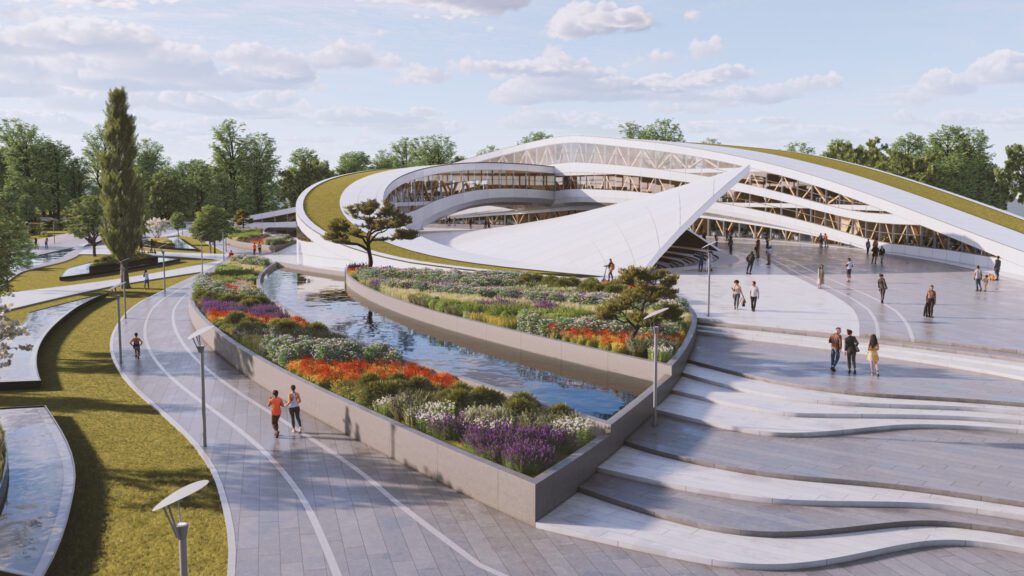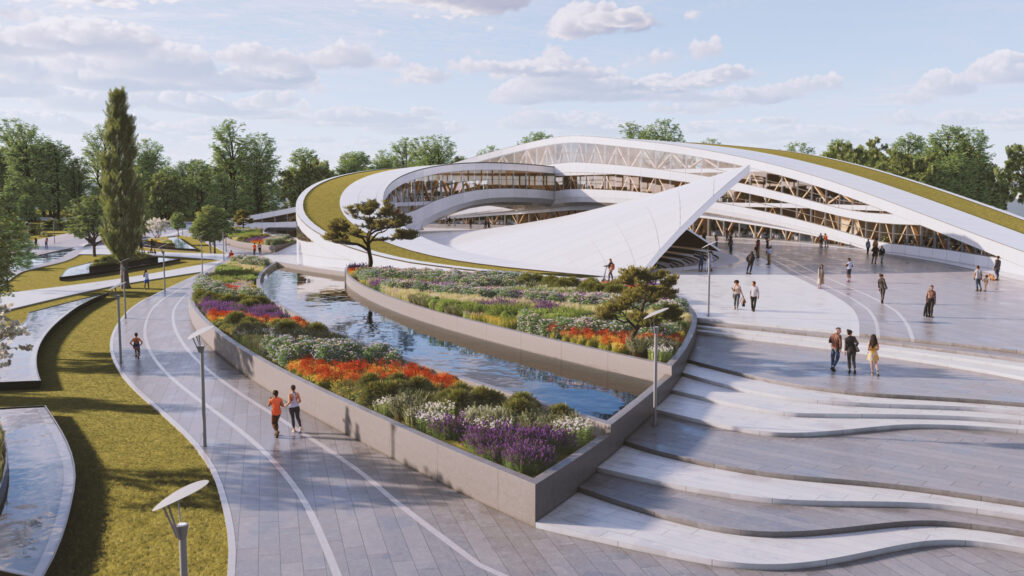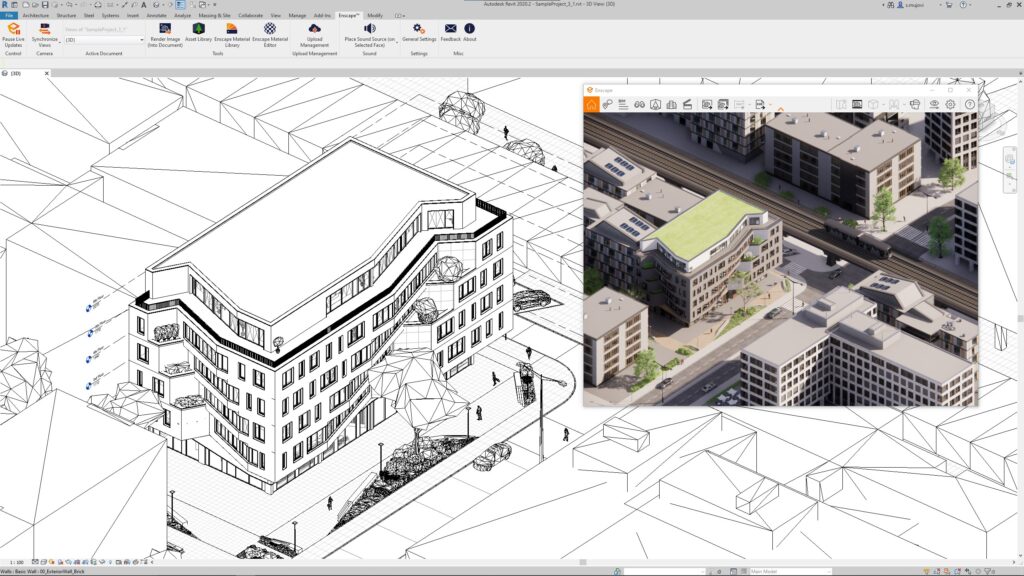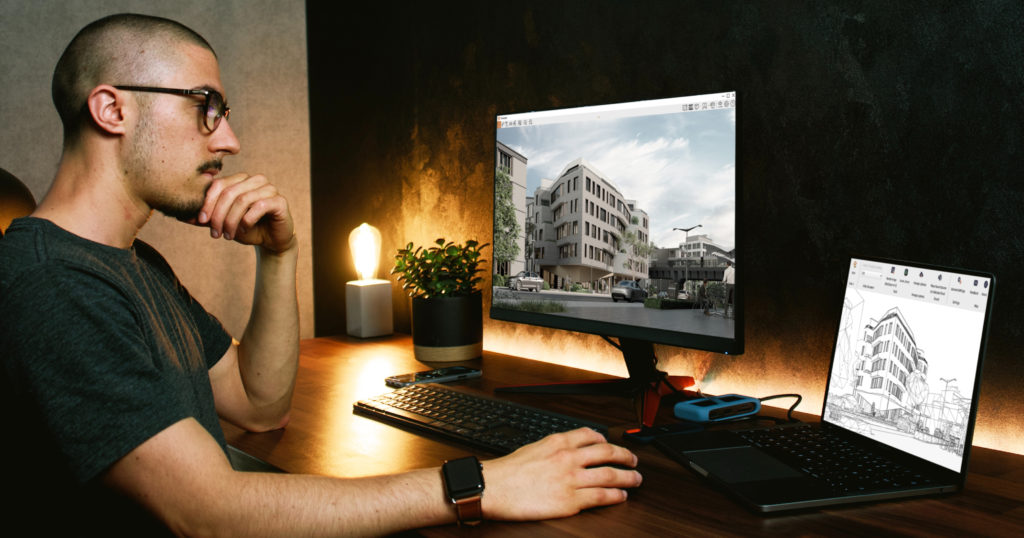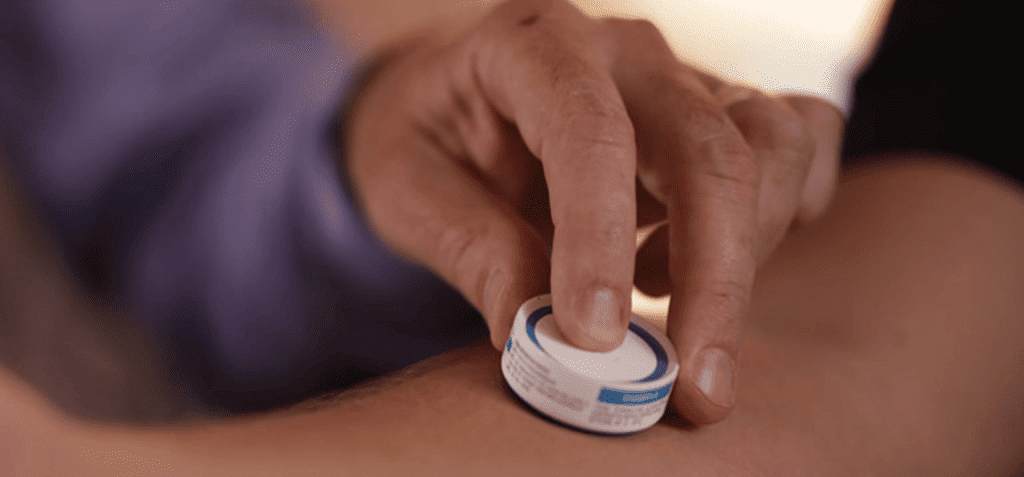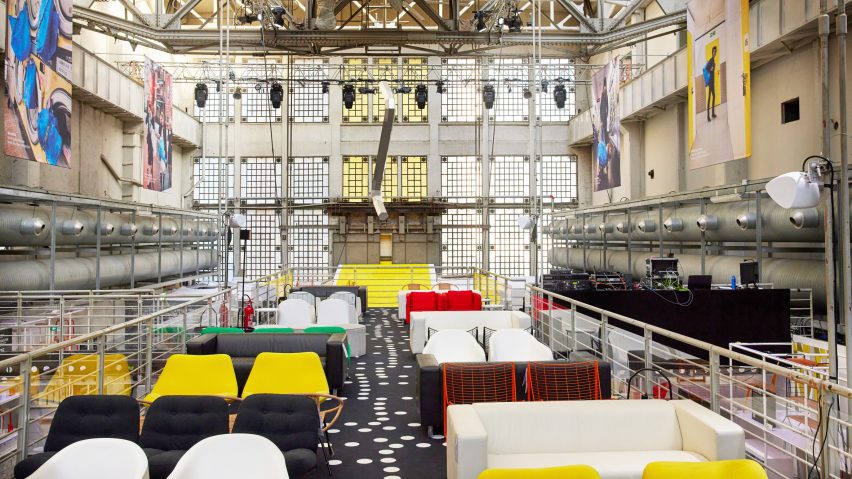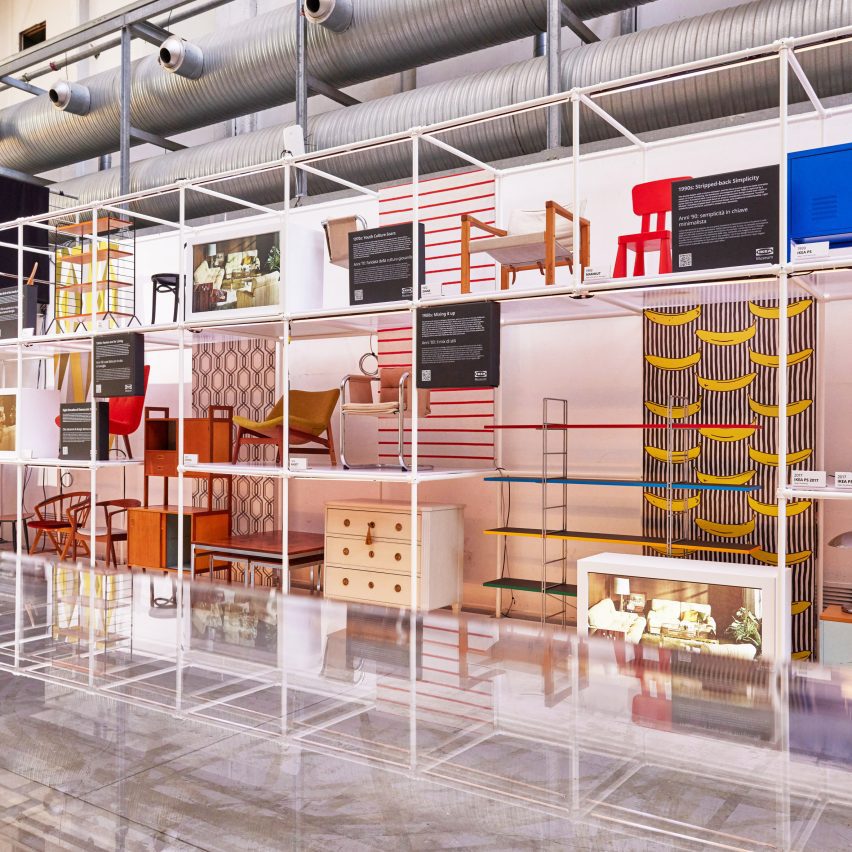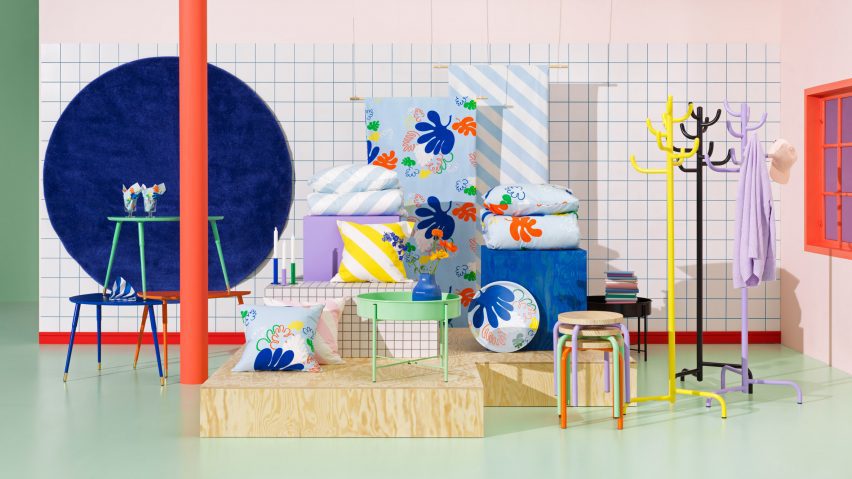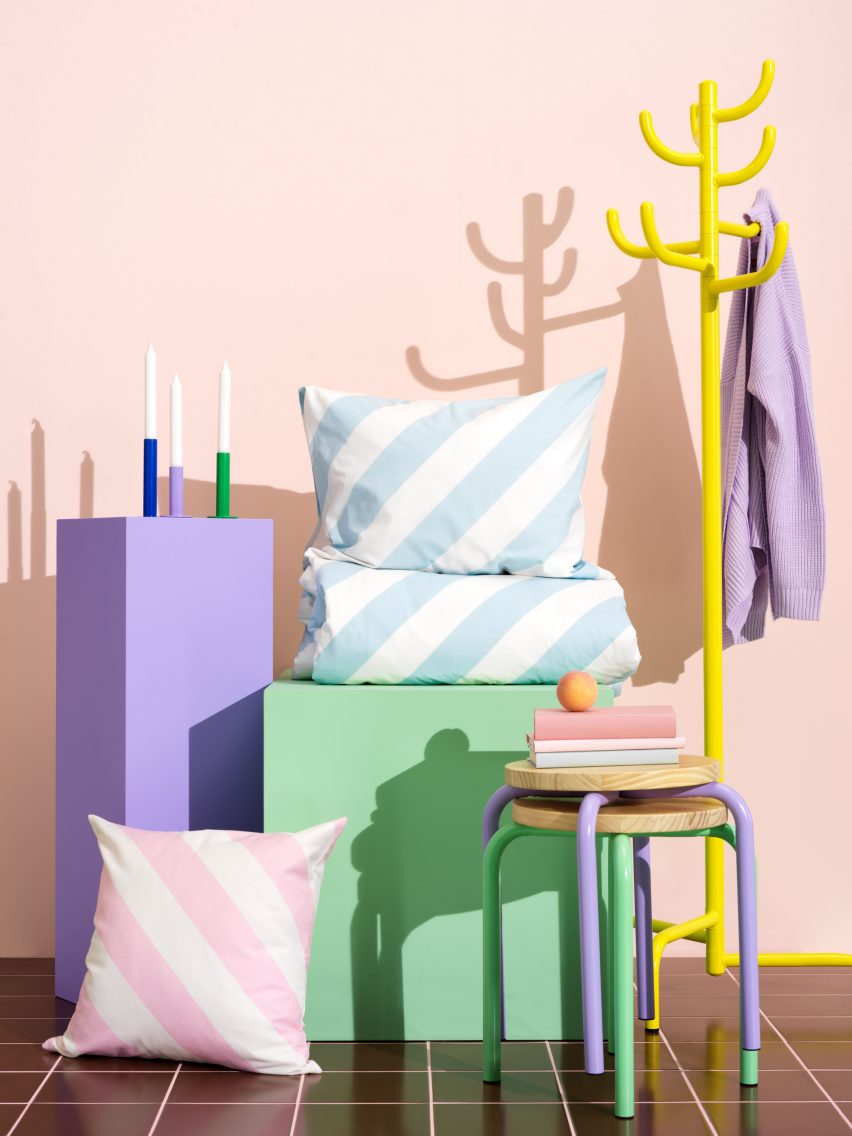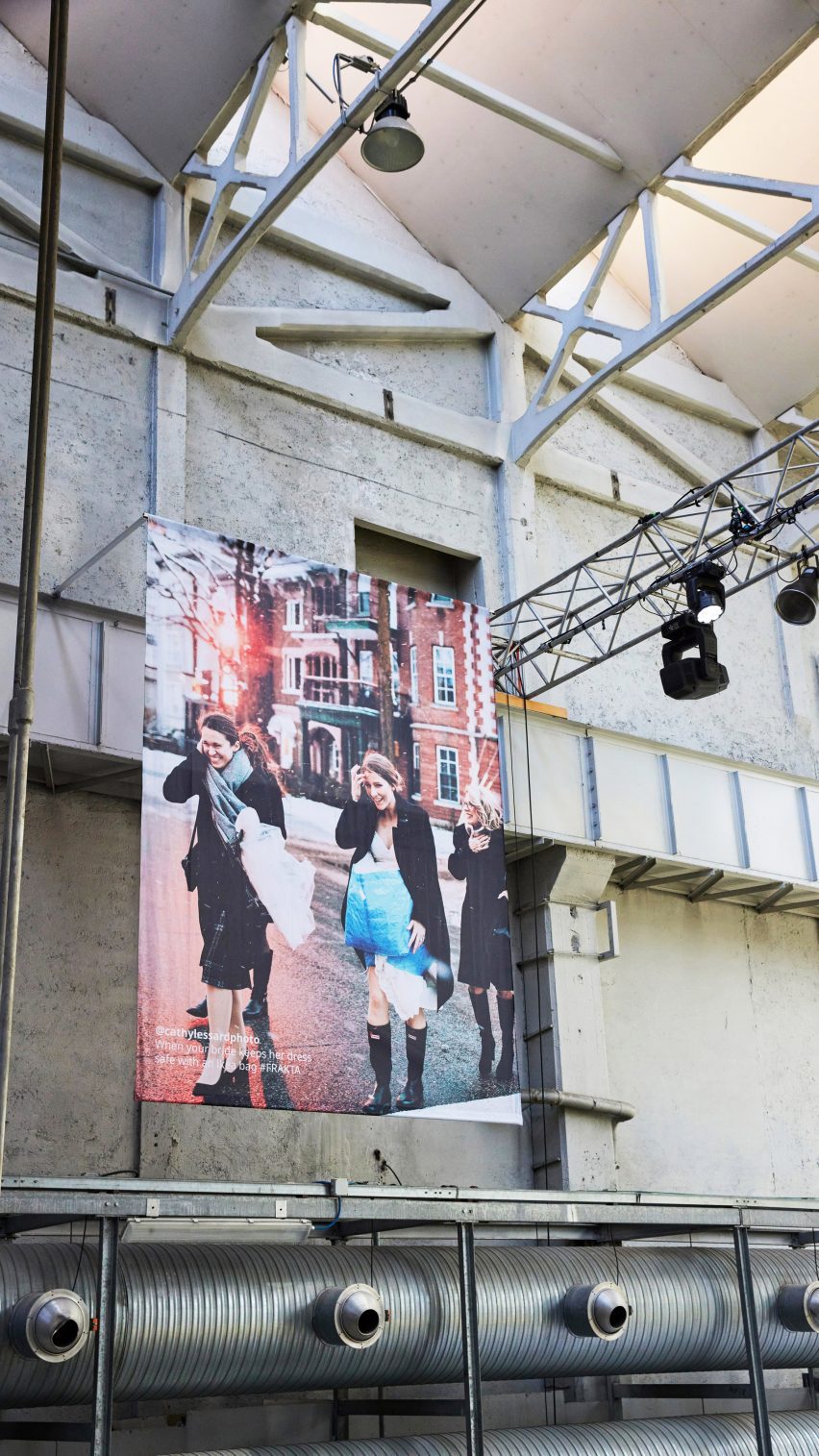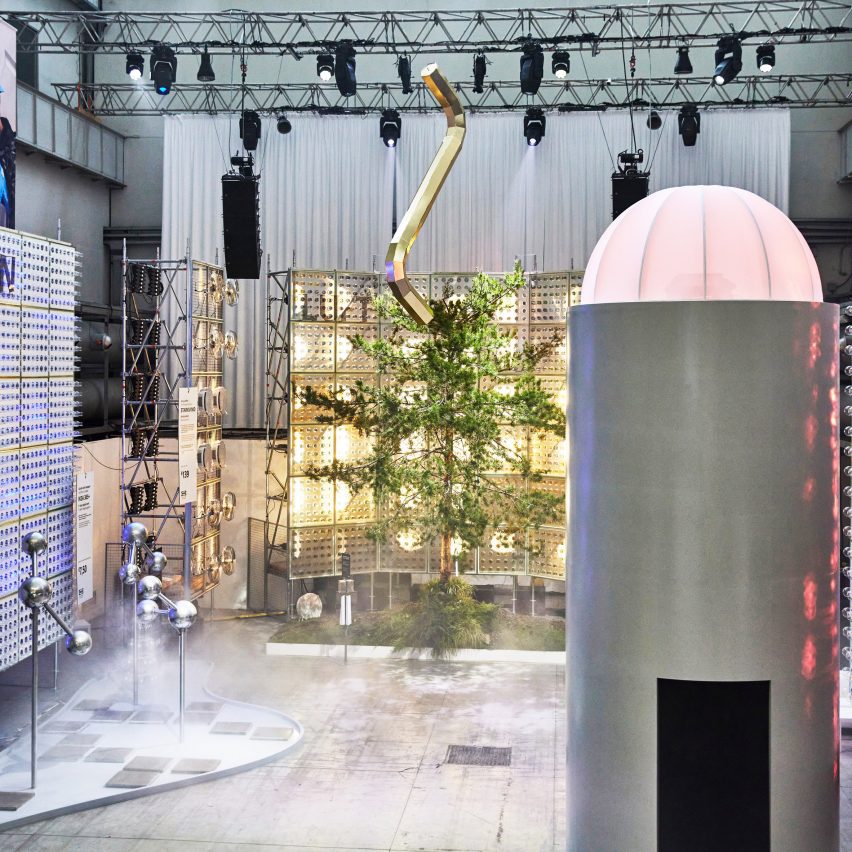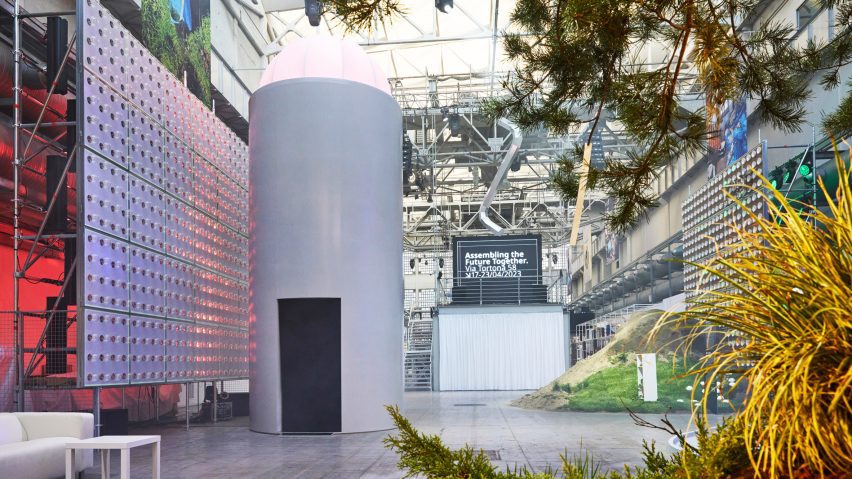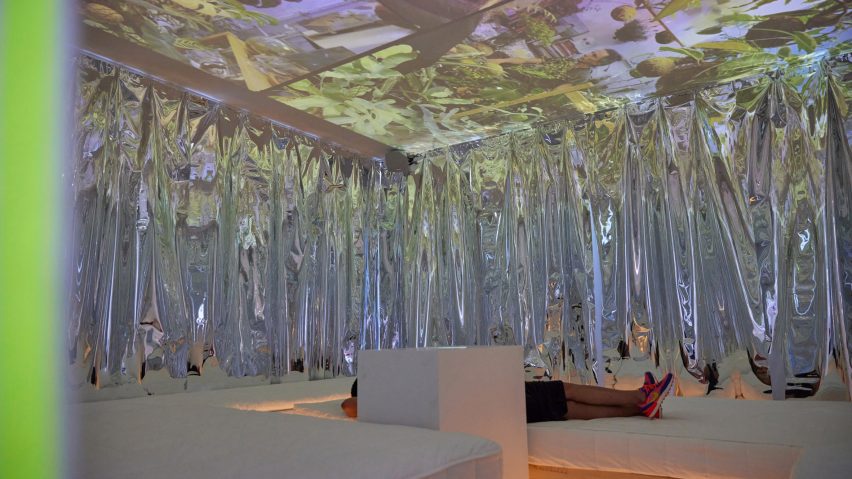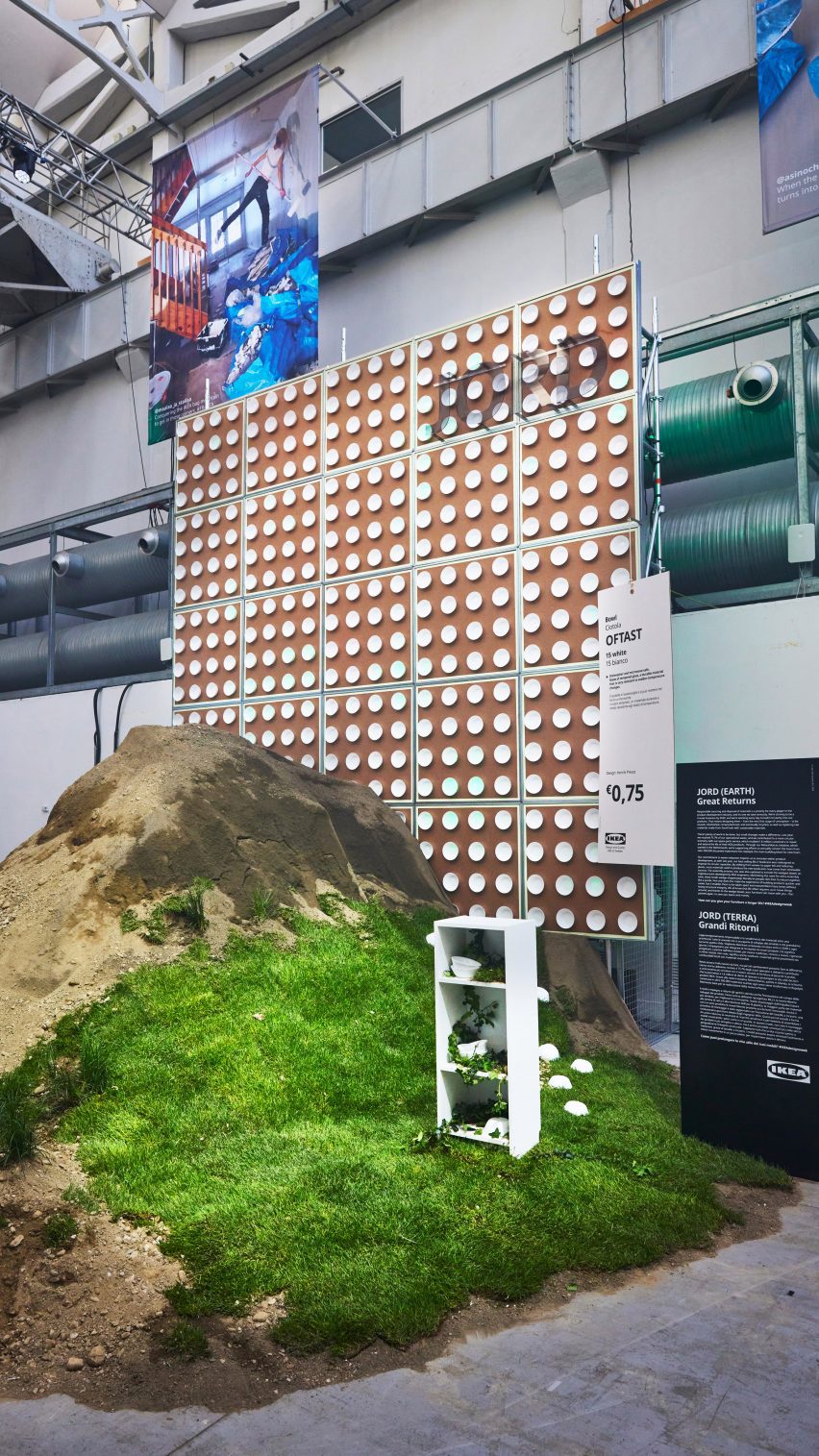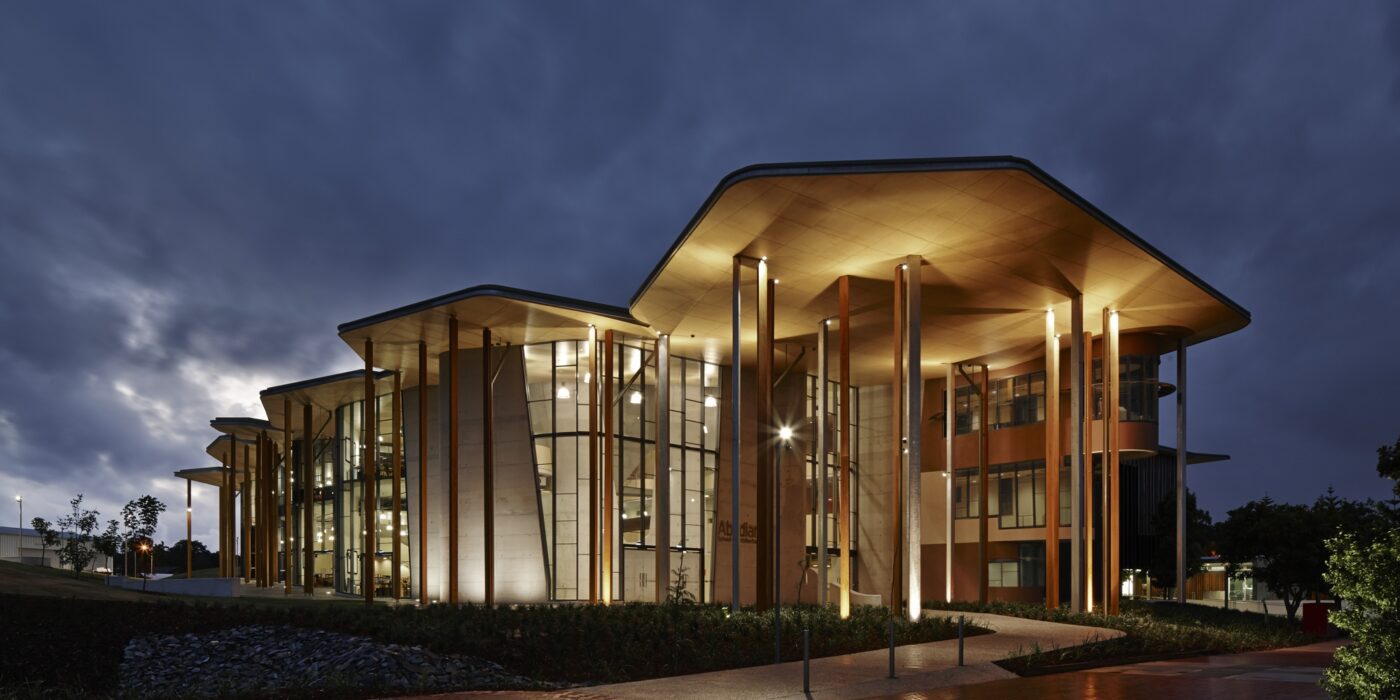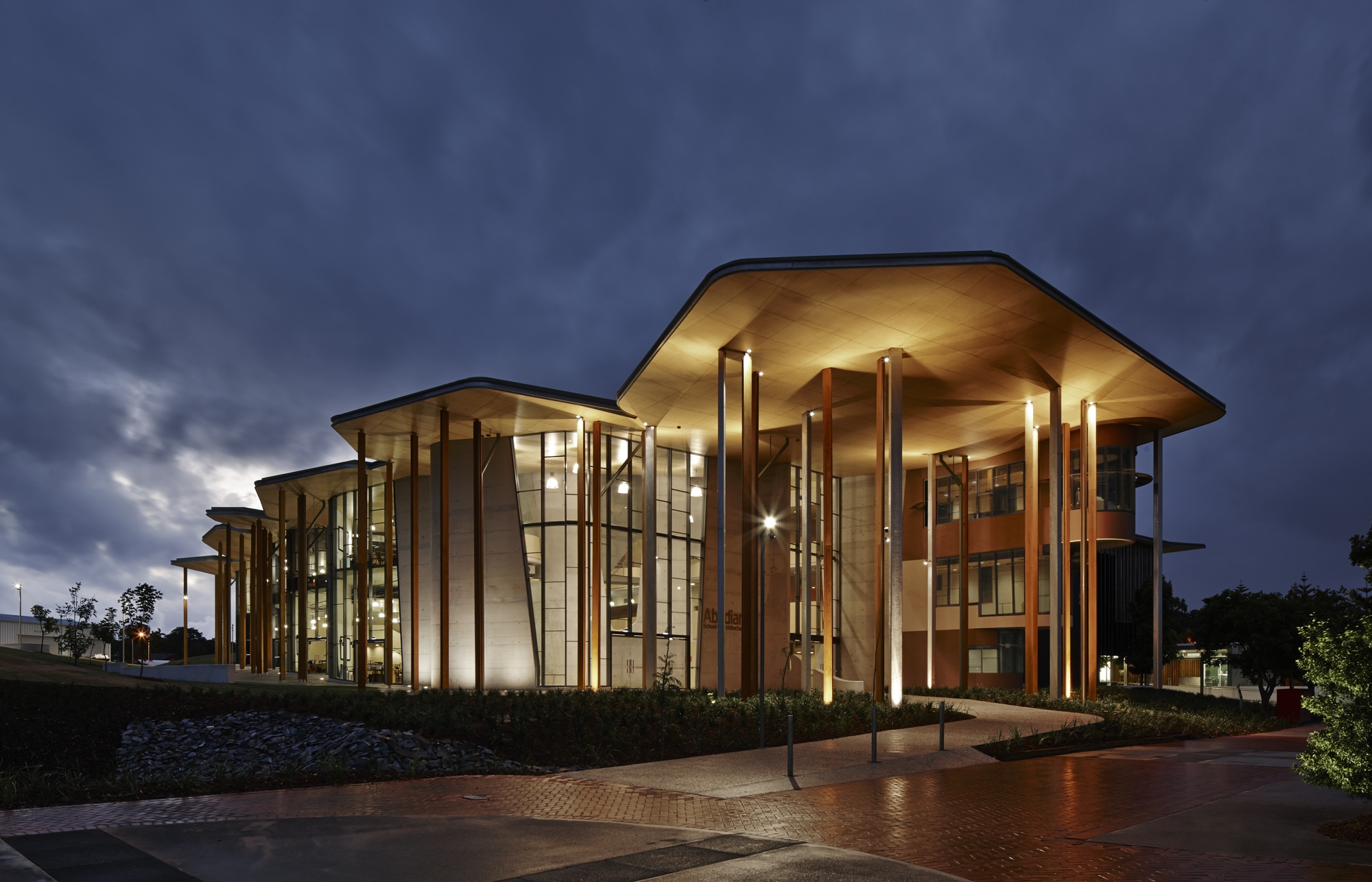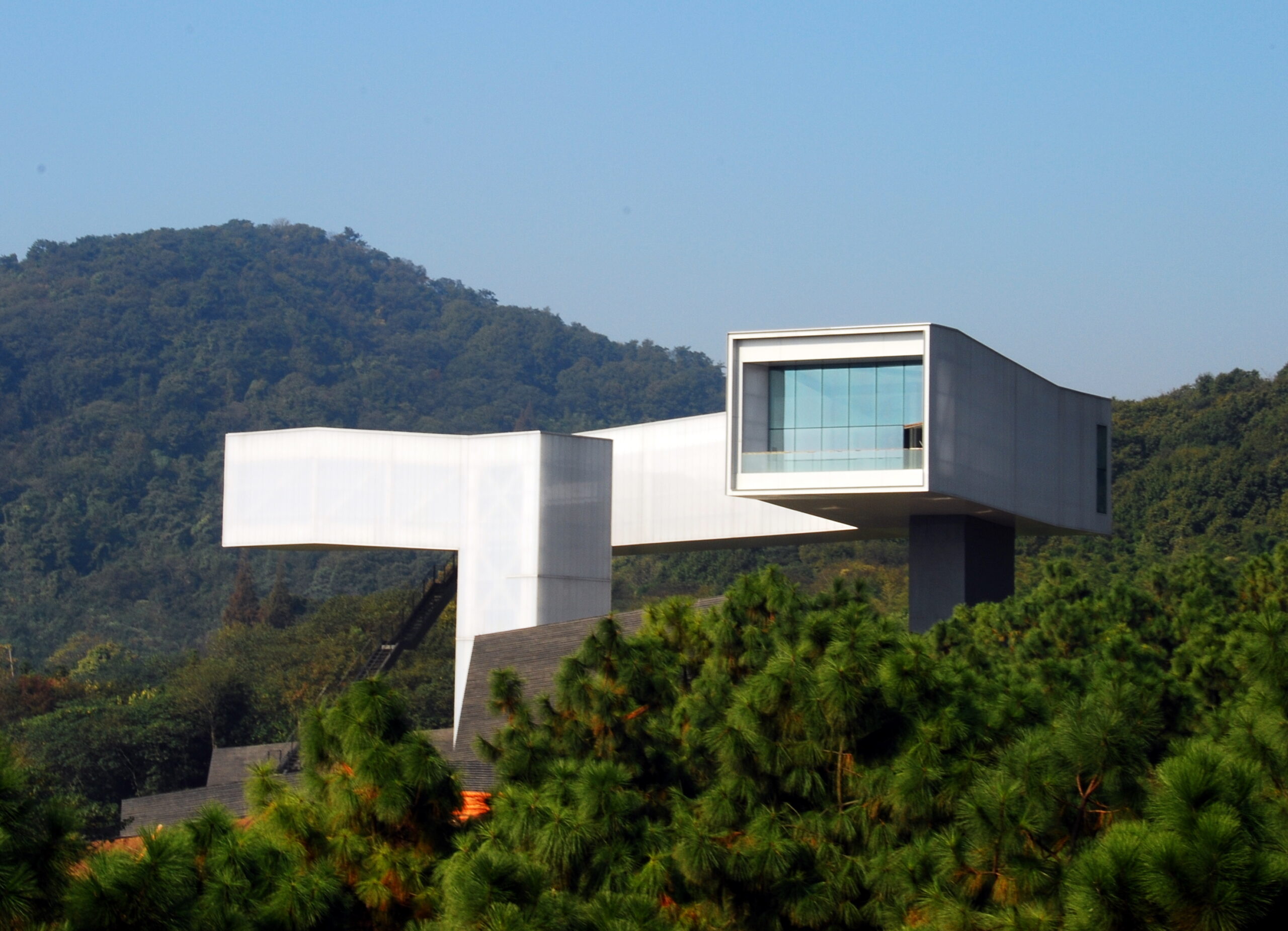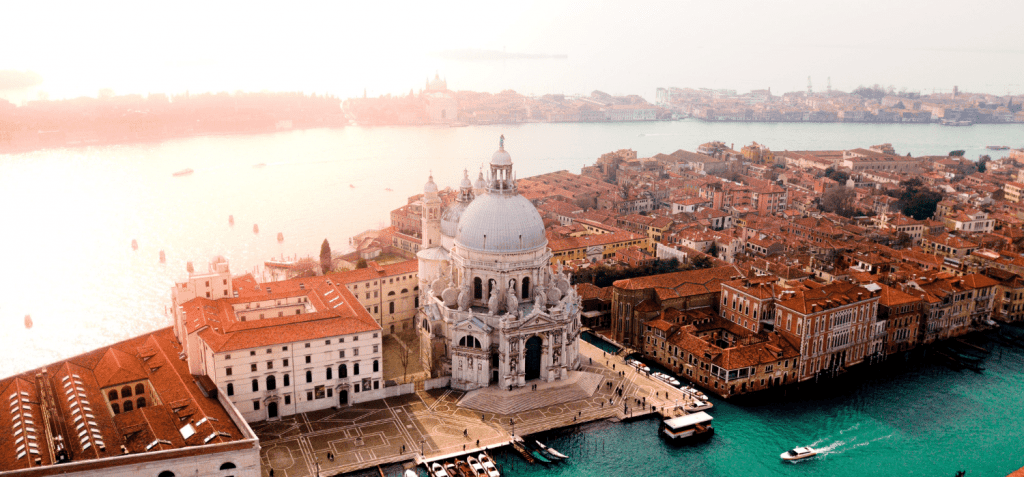From 4 to 1 Planet showcases climate-friendly homes of the future
A trio of pavilions have been installed on Copenhagen’s waterfront, showing how radical materials and new ways of living might reduce the carbon footprint of housing construction.
From 4 to 1 Planet offers three visions for the home of the future, each created by a different team of architects, engineers and researchers, in the form of a full-scale built prototype.
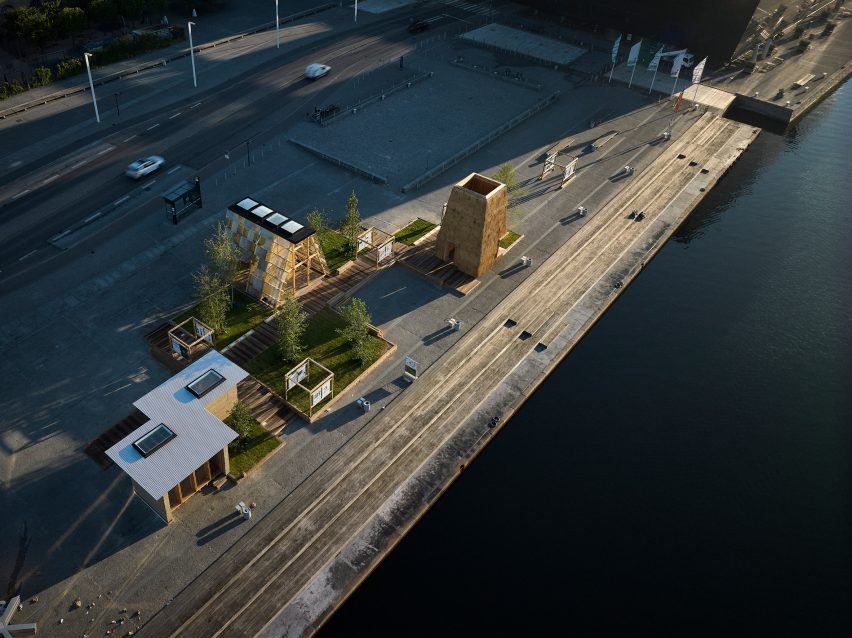
One demonstrates the potential of rammed earth, a second combines a thatched exterior with a clay-block interior, and a third suggests how homes could be more space-efficient.
They were among 15 SDG Pavilions created as part of the programme for the UIA World Congress of Architects earlier this month, to explore themes relating to the UN’s Sustainable Development Goals.
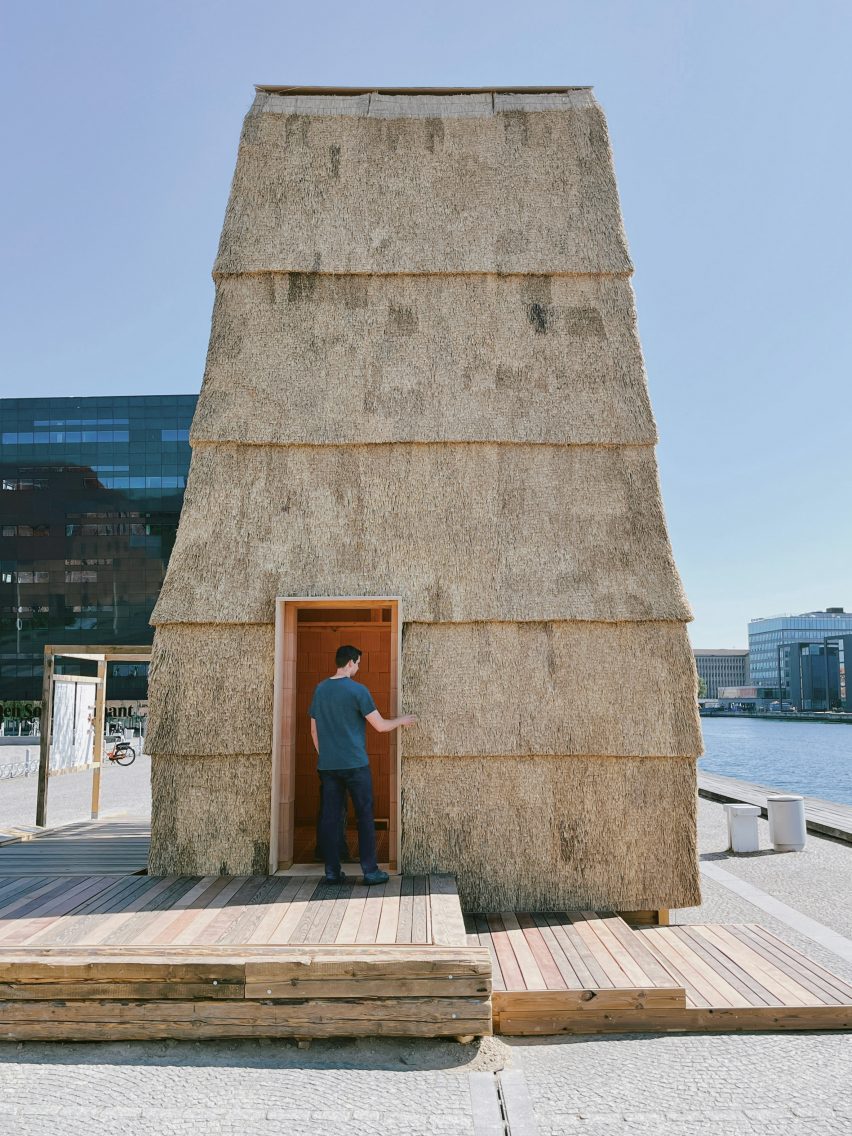
They are located in Søren Kierkegaard’s Plads, next door to the Danish Architecture Center.
The three design teams were the winners of the Next Generation Architecture competition, which called for ideas into how affordable housing construction could become more eco-friendly.
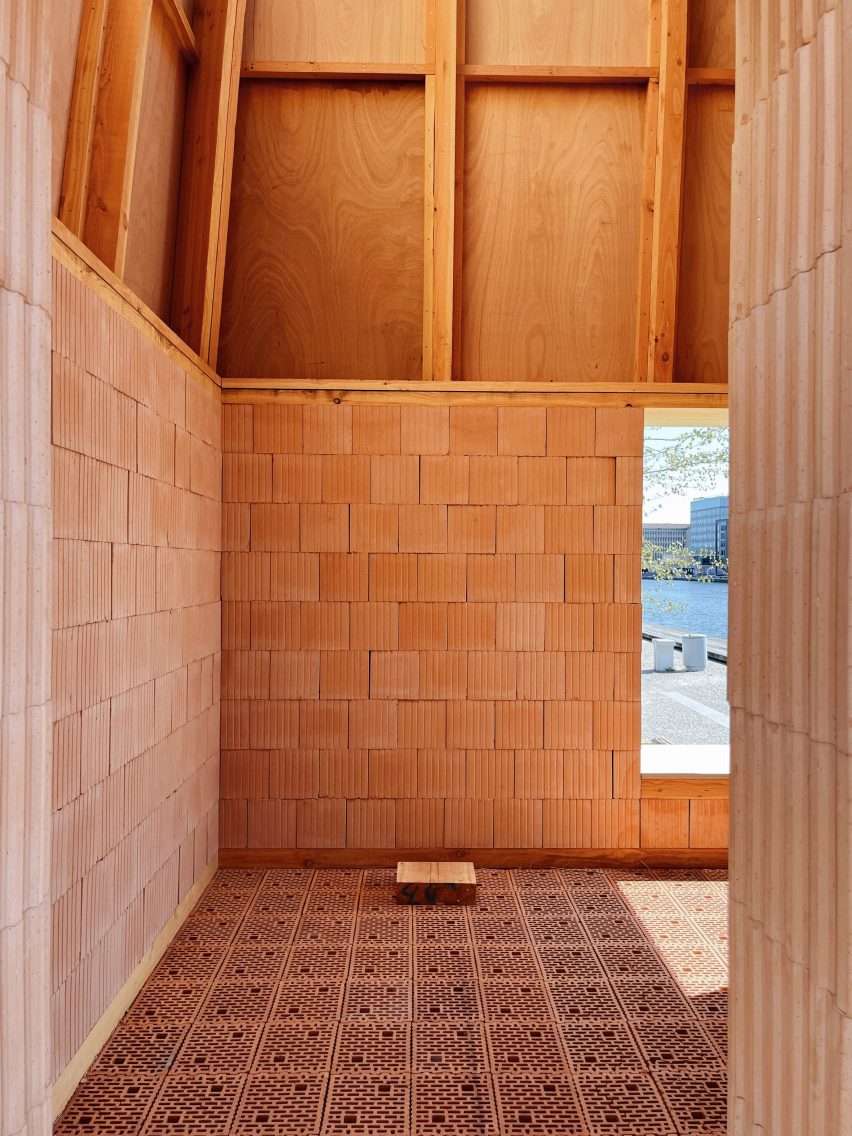
The architecture studios behind the three designs are ReVærk, Tegnestuen Lokal, and Leth & Gori and Rønnow.
Leth & Gori and Rønnow worked with the Center for Industrialised Architecture (CINARK), a research group at the Royal Danish Academy, on the design titled Thatched Brick Pavilion.
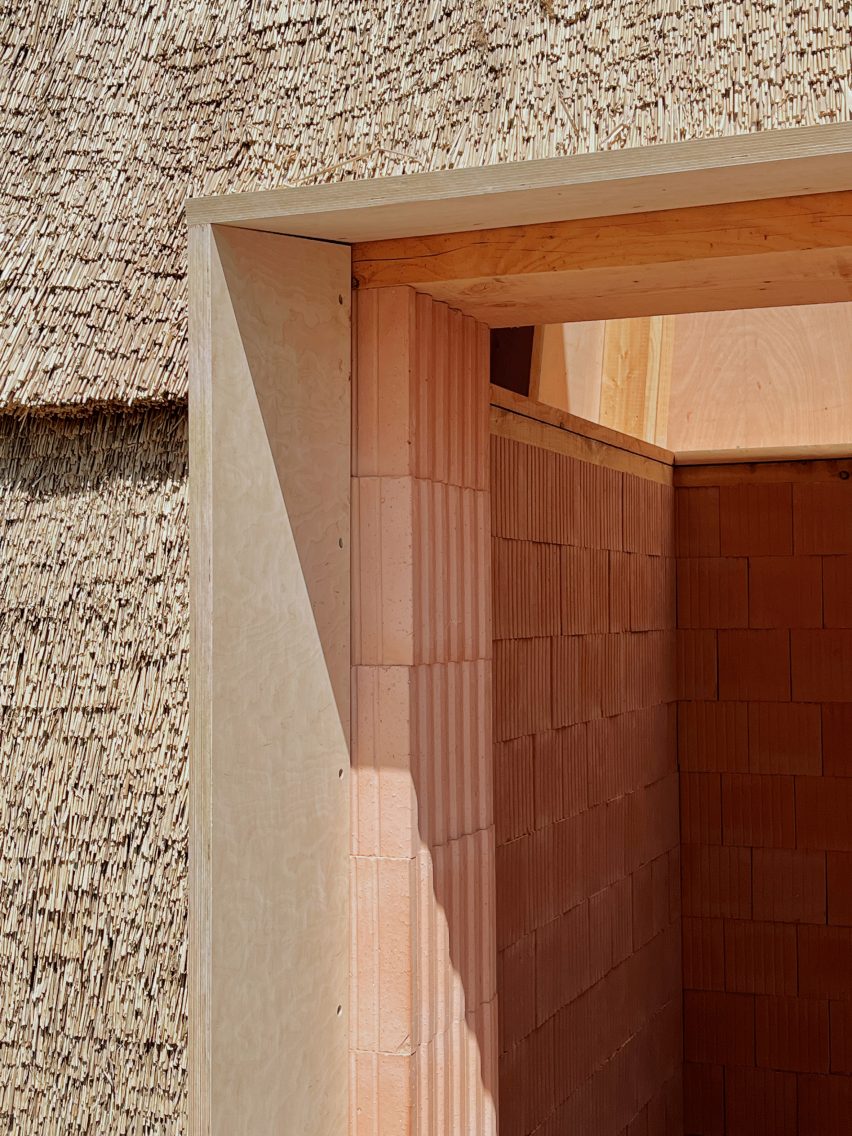
The structure aims to show how thatch, made from straw, can be combined with porous clay blocks to create buildings with surprisingly high levels of insulation and fire safety.
“We discovered both aesthetic and technical potentials in the combination of these materials,” said Uffe Leth, a founding partner at Leth & Gori.
“If we build tall buildings with these brick blocks, the thatched facades help us with extra insulation,” he told Dezeen.
“That means we don’t need to invest energy and resources on using deeper blocks or two layers of blocks to live up to the building regulations.”
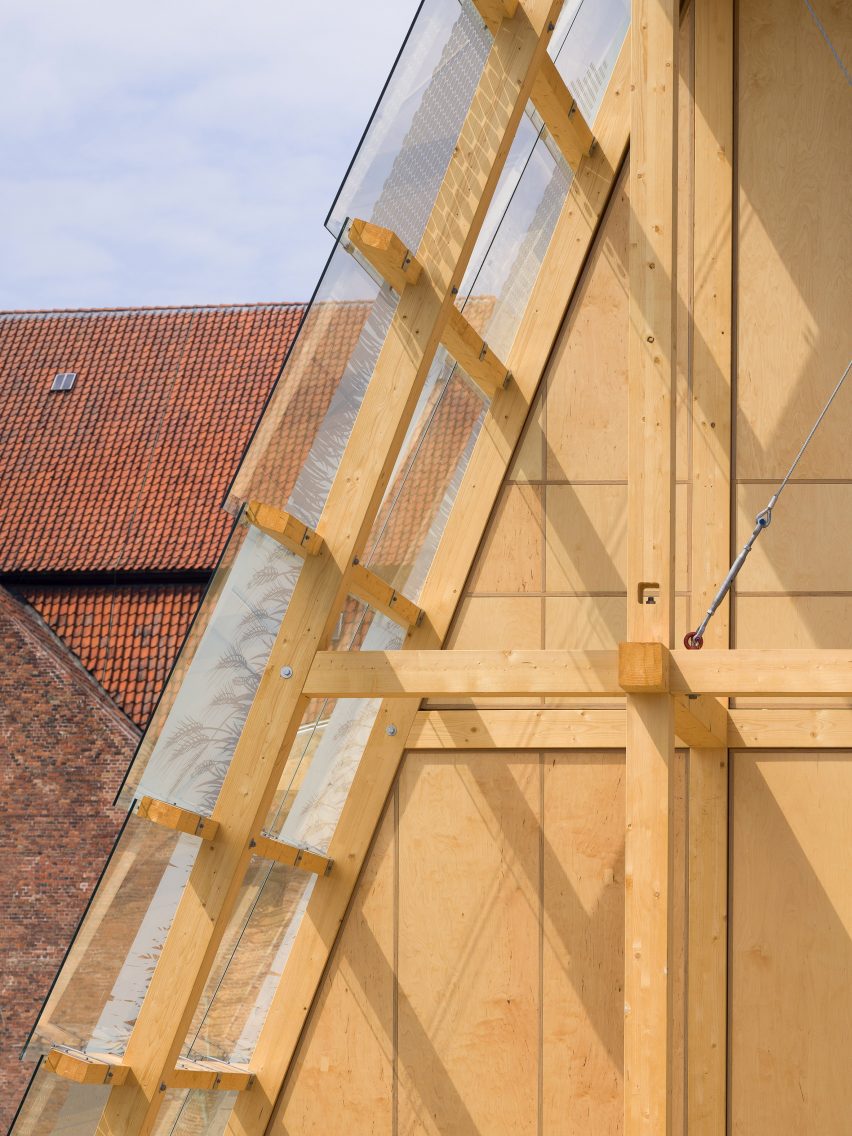
Tegnestuen Lokal’s design, the Quarter Pie Pavilion, proposes how mass housing can facilitate new approaches to living, as well as new building techniques, to create homes that prioritise quality rather than quantity.
“In order for us to approach a more planetarily responsible building culture we cannot only rely on how we build, but also need to be critical about how much,” said studio founder Christopher Ketil Dehn Carlsen.
“In our opinion even the greenest building materials in the world cannot counteract our current overconsumption of space, which is why we need to make our housing market respond to both demographic changes as well as new and radical co-living alternatives,” he told Dezeen.

The prototype was accompanied by a list of 10 key principles, offering a strategy that could potentially be adopted by the entire housing construction industry. Carlsen describes it as “a set of easy-to-apply rules for planetary responsible housing”.
This list advocates for homes that incorporate co-living and other forms of sharing, as well as flexibility.
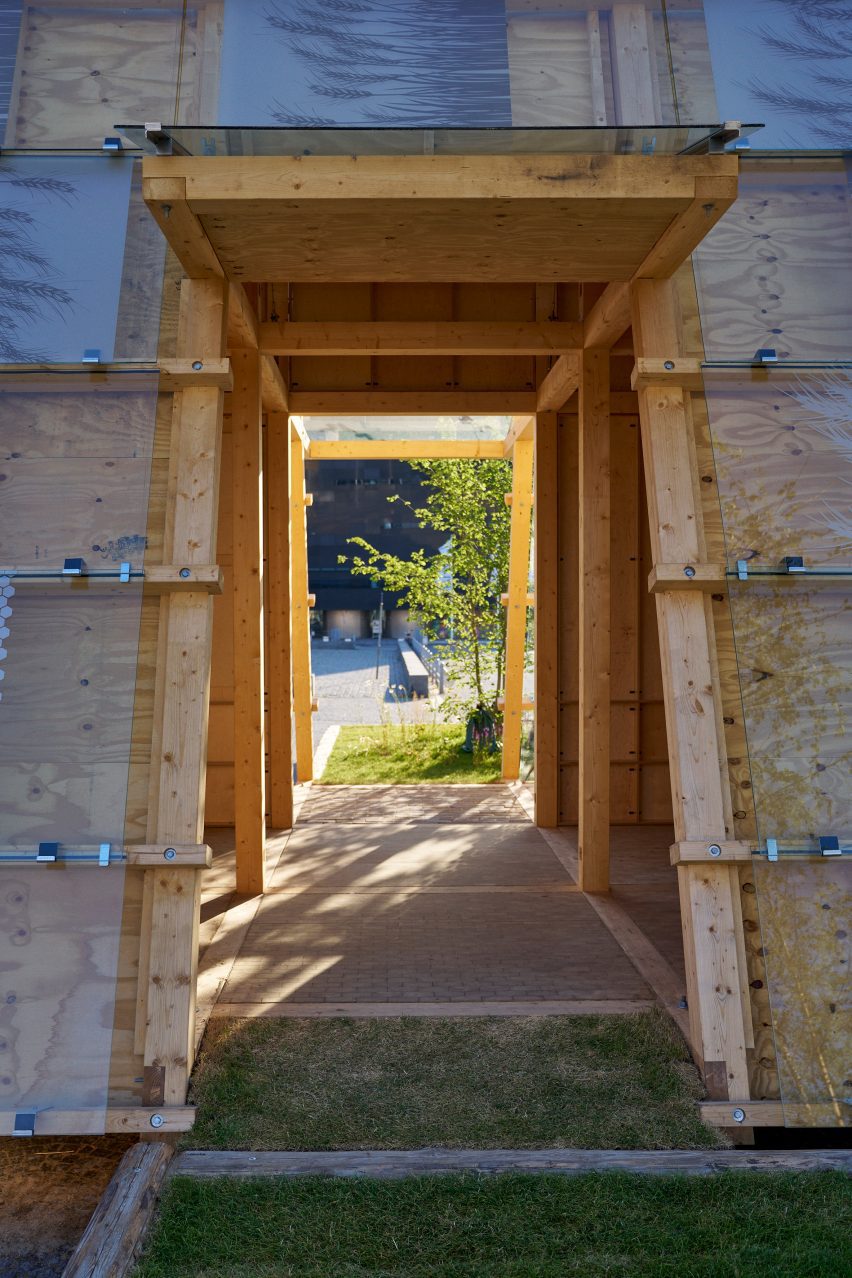
“Rather than showing one answer to our current challenges, we wanted to pose questions that could generate unforeseen and radical answers,” Carlsen said.
“Our pavilion and its overarching housing concept is just one example, in which we’ve focused on the tectonics of disassembly. But in our opinion, the ruleset itself is the real product of the initiative.”
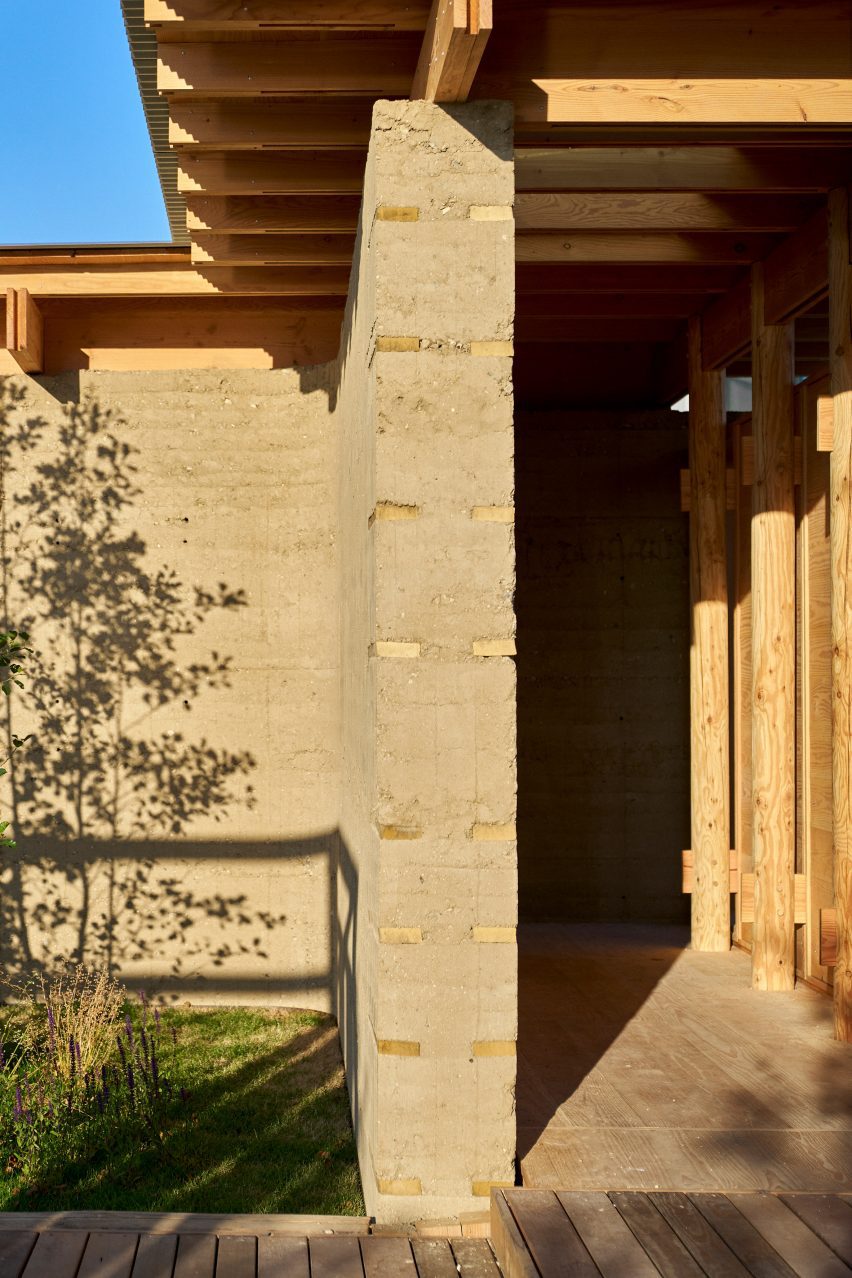
ReVærk named its project Natural Pavilion, as it focuses on biomaterials.
One of the aims was to show how these types of materials are not just climate-friendly, but can also improve the sensory quality of a home’s interior.
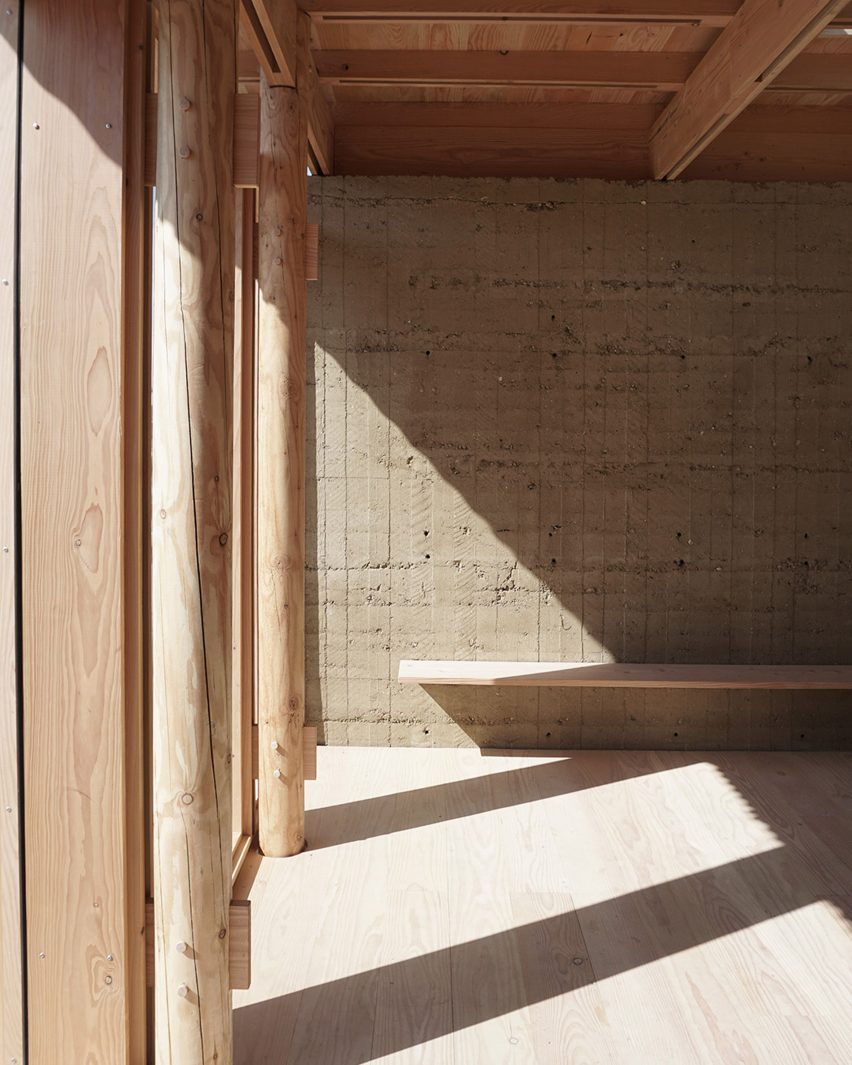
The structure features rammed earth walls, made using locally sourced clay soil, combined with a timber structure and biogenic insulation cassettes made from wood fibre.
“Construction materials account for about 70 per cent of a building’s carbon footprint,” said Simeon Østerlund Bamford, founding partner of ReVærk.
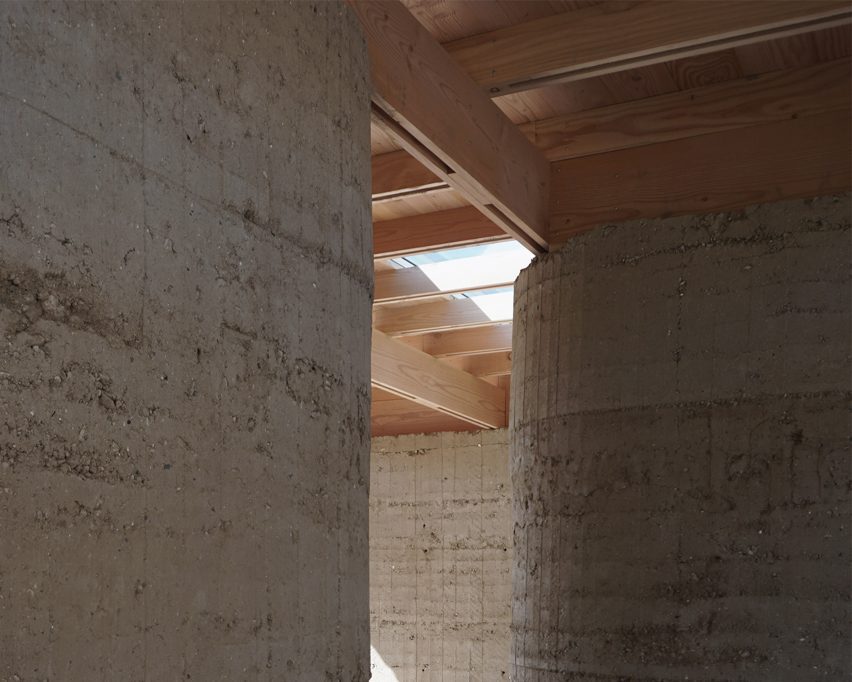
“The answer to that has inevitably always been to look back in order to look forward,” he told Dezeen.
“We wanted to demonstrate how natural low-emission materials and old building techniques can create a new architectural experience, where the materials both provide natural indoor climate advantages as well as great aesthetic qualities.”
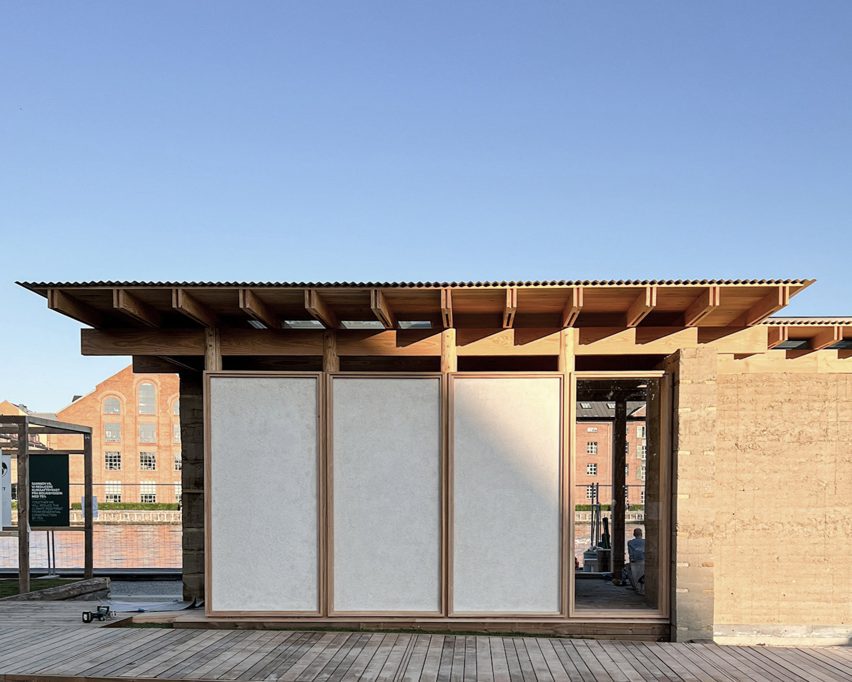
From 4 to 1 Planet is the result of an initiative spearheaded by Smith Innovation, a Danish research and development consultancy, supported by Realdania and Villum Fonden.
Once the exhibition is over, the pavilions will be relocated to new locations and repurposed.
From 4 to 1 Planet is on show at Søren Kierkegaard’s Plads from 10 June to 11 August 2023. See Dezeen Events Guide for an up-to-date list of architecture and design events taking place around the world.

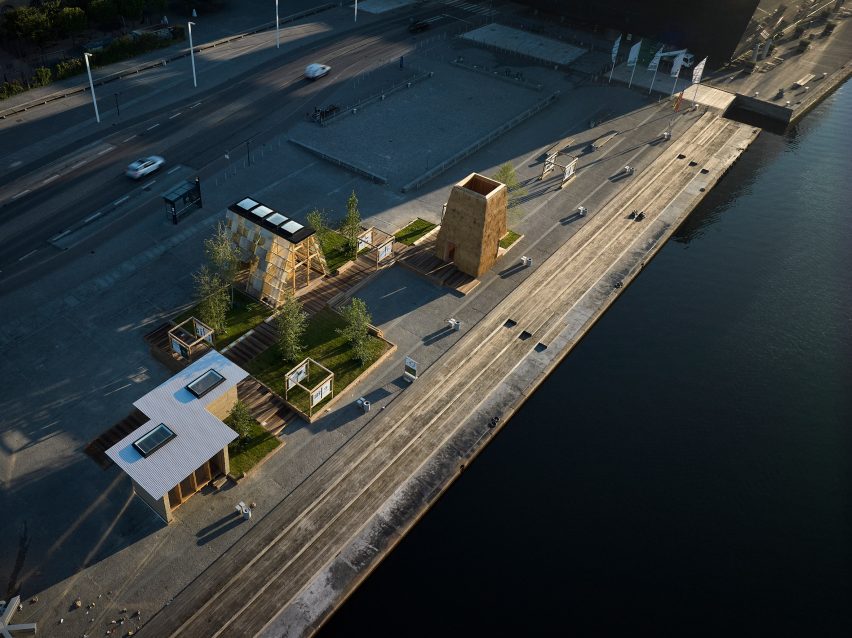
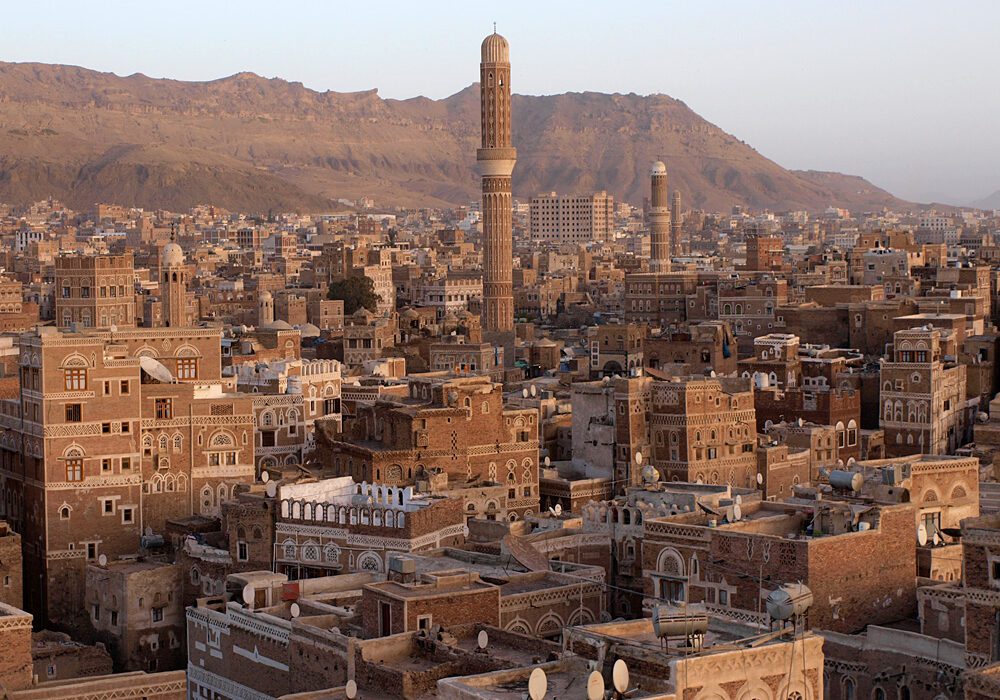
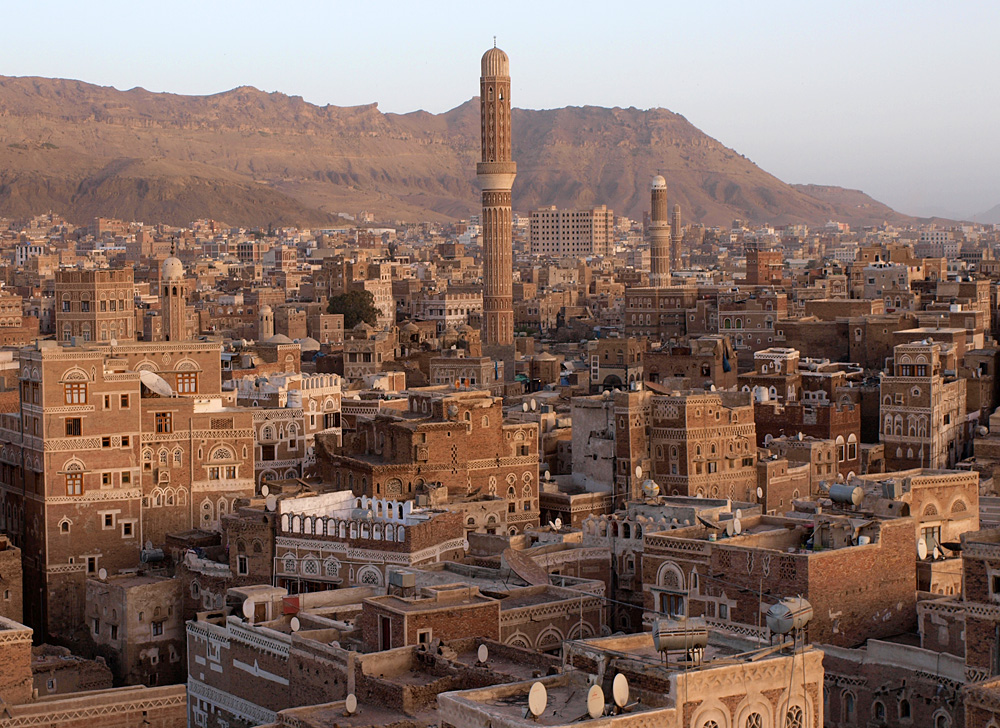
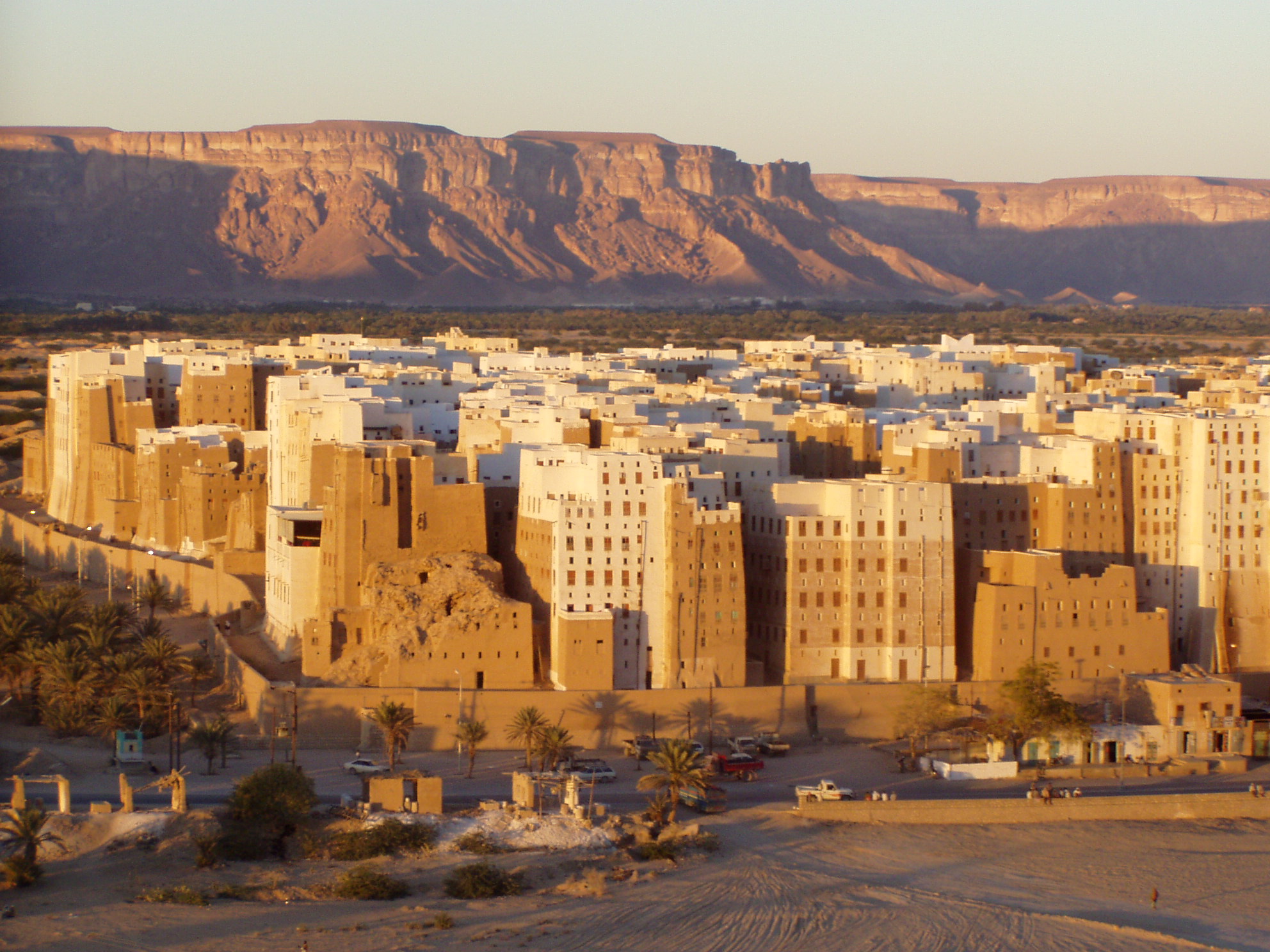
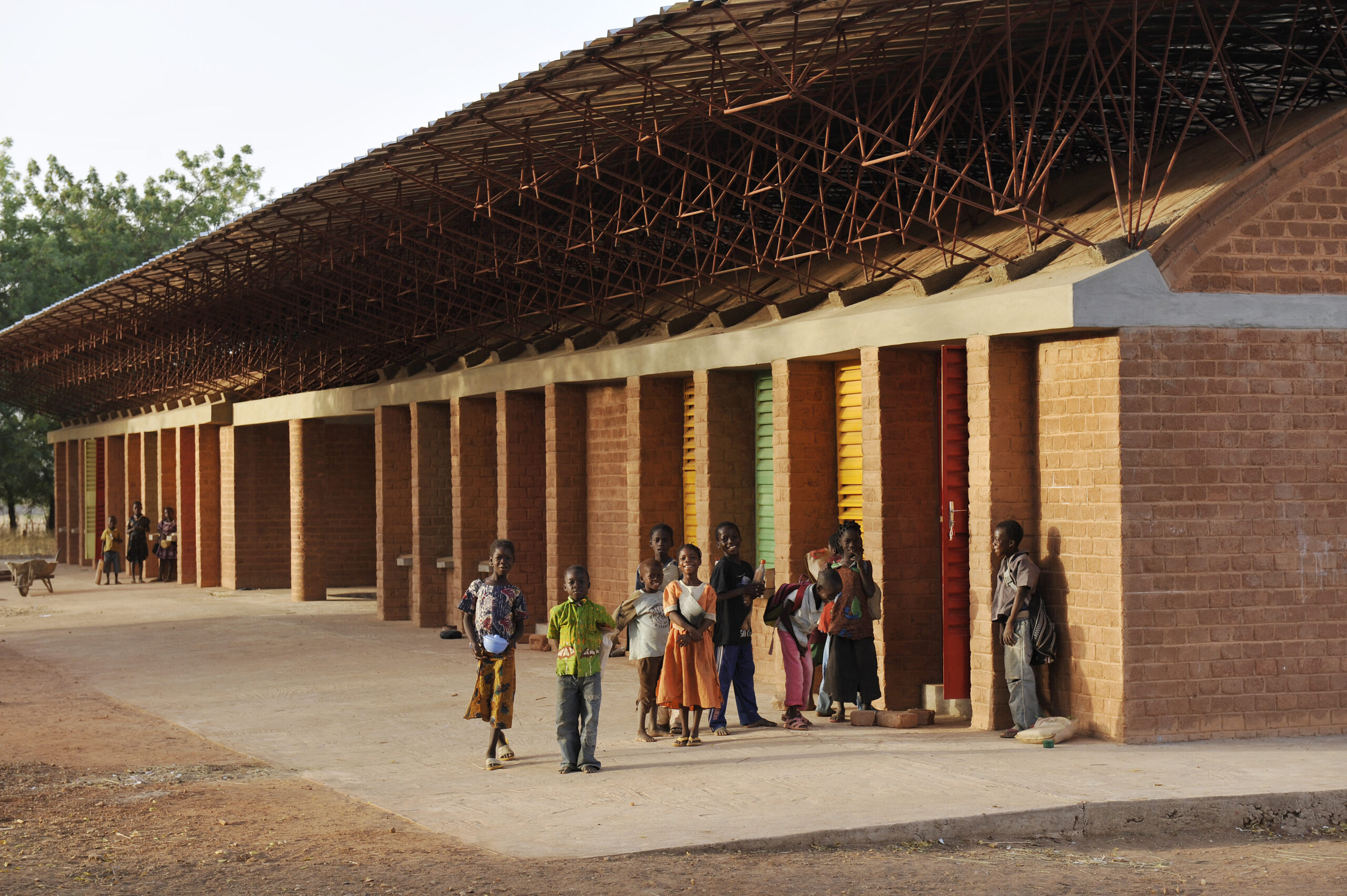
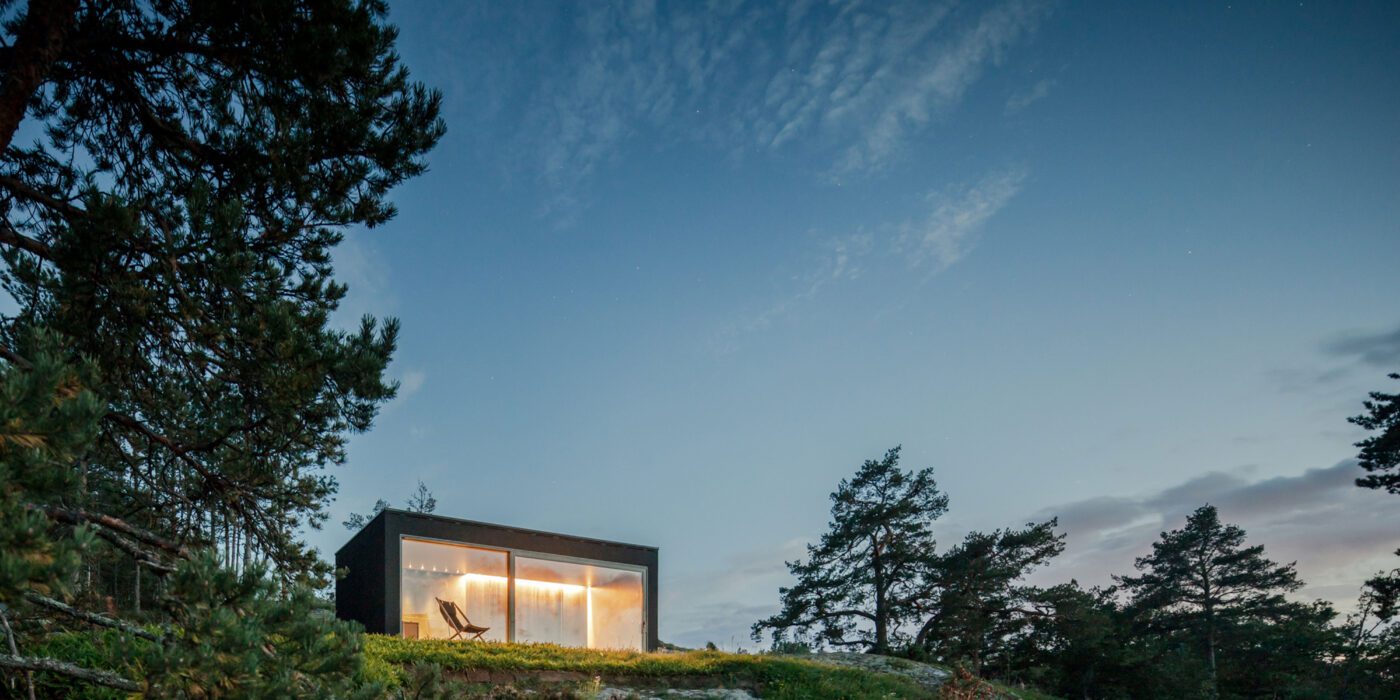
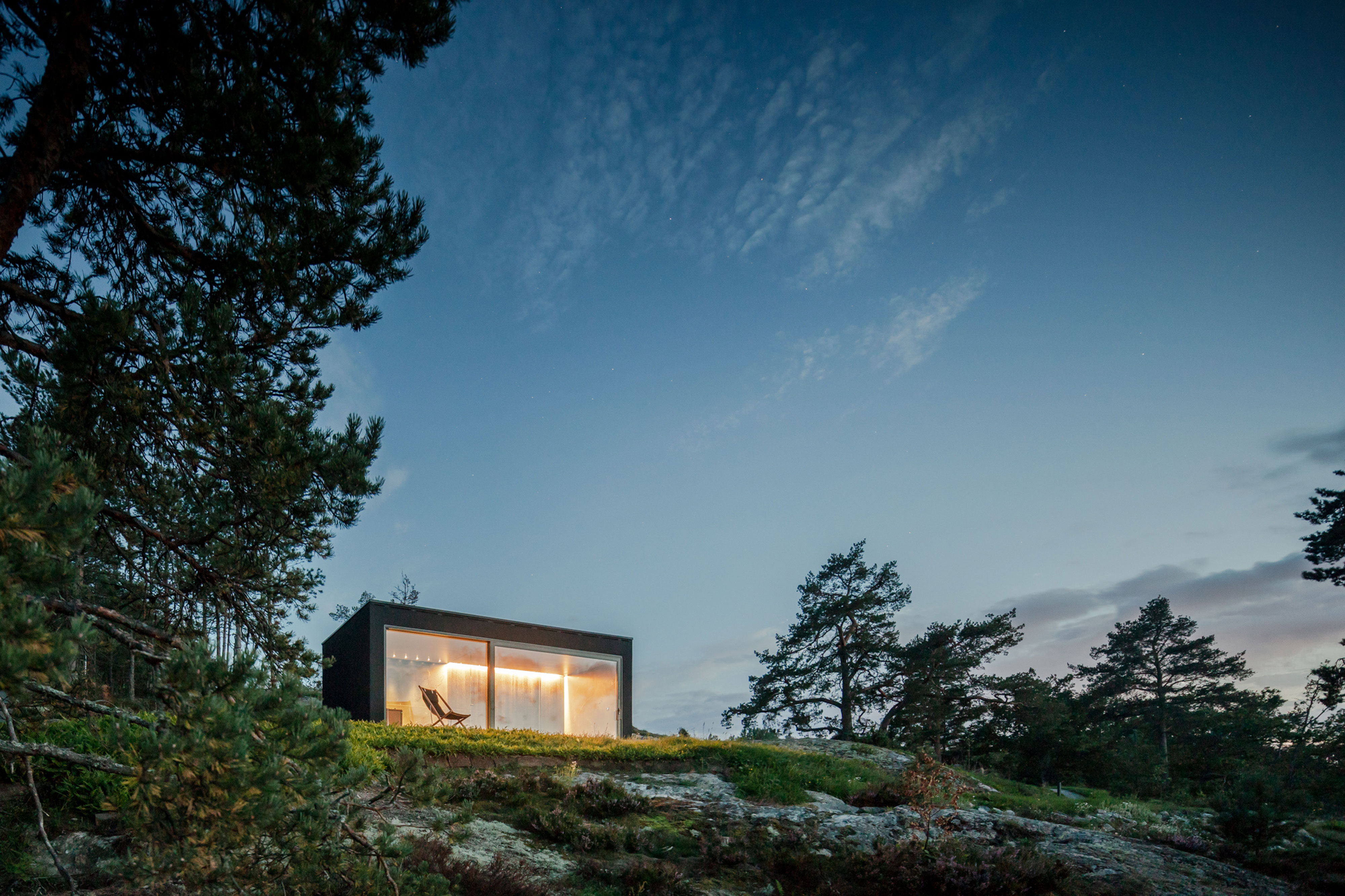
 Made of black granite (Negresco) and dark wood (Oak), this sauna was designed to be a camera obscura, a box drawn to shape views of the landscape. Located in the middle of Stockholm’s archipelago, a narrow pathway brings the visitors to the sauna: a black box embedded in the rocks. The matte finish can be seen both inside and as part of the structure’s façade. As the team outlines, inside is a monolithic stone bench that faces the water through a large sliding window. On the back, a thick wall contains all the services: a small kitchen hidden behind the sliding doors and a bathroom illuminated by a skylight. At night, the small sauna resembles a lighthouse, a warm and cozy space illuminated from the inside.
Made of black granite (Negresco) and dark wood (Oak), this sauna was designed to be a camera obscura, a box drawn to shape views of the landscape. Located in the middle of Stockholm’s archipelago, a narrow pathway brings the visitors to the sauna: a black box embedded in the rocks. The matte finish can be seen both inside and as part of the structure’s façade. As the team outlines, inside is a monolithic stone bench that faces the water through a large sliding window. On the back, a thick wall contains all the services: a small kitchen hidden behind the sliding doors and a bathroom illuminated by a skylight. At night, the small sauna resembles a lighthouse, a warm and cozy space illuminated from the inside.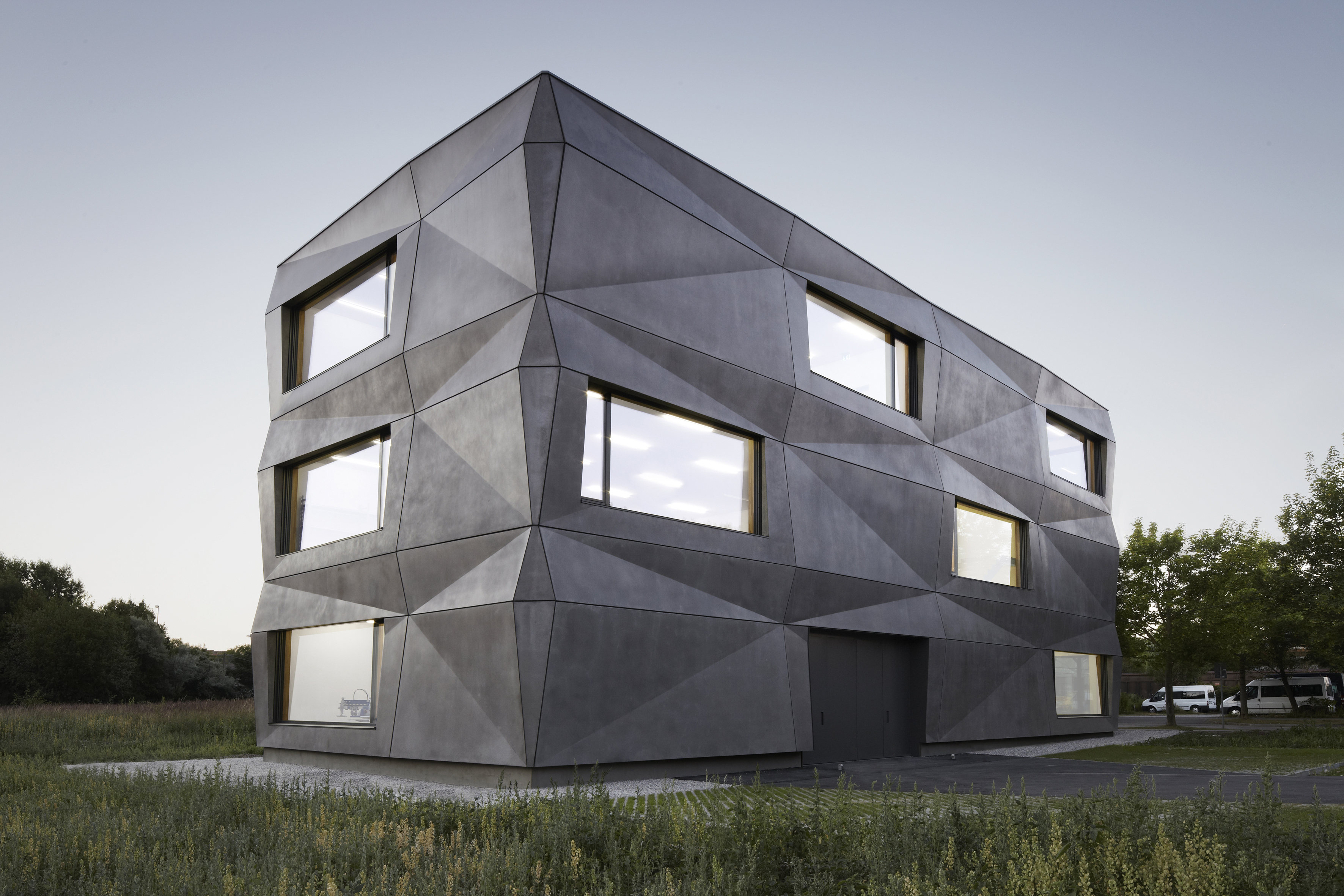
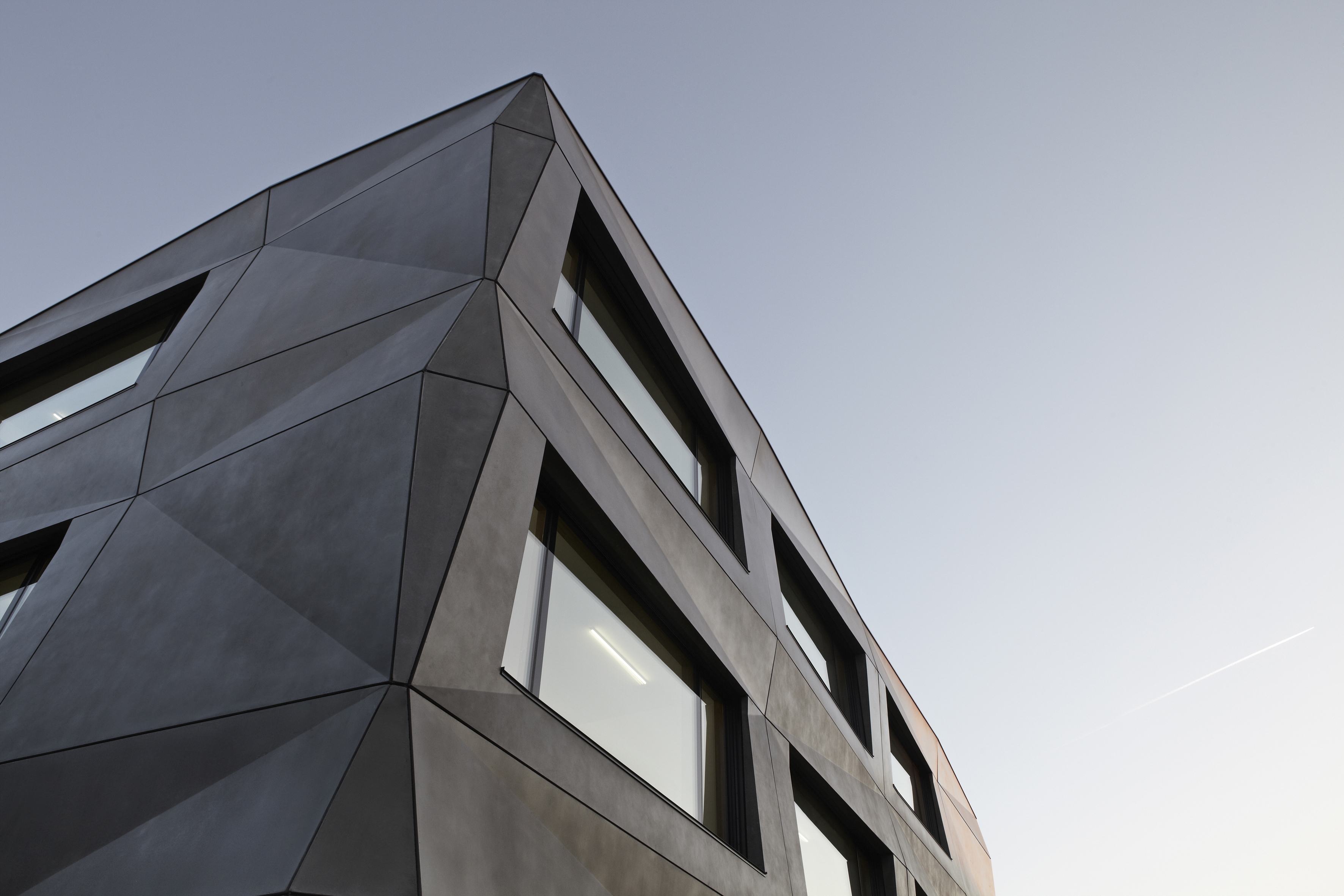 Tillicharchitektur designed this building to host production and office spaces for a textile finishing and vending firm. Its iconic feature is the folded façade, which reimagines the simple cube. The matte bright surface of the anthracite pigmented concrete responds to its environment. Depending on the season, time of day, weather, and lighting, the façade continuously changes its character. In contrast to the expressive façade, the interior design leaves more space for the production process and the products in the showroom. The team explains that the limitation on few, but high class materials, is the main factor driving the interior.
Tillicharchitektur designed this building to host production and office spaces for a textile finishing and vending firm. Its iconic feature is the folded façade, which reimagines the simple cube. The matte bright surface of the anthracite pigmented concrete responds to its environment. Depending on the season, time of day, weather, and lighting, the façade continuously changes its character. In contrast to the expressive façade, the interior design leaves more space for the production process and the products in the showroom. The team explains that the limitation on few, but high class materials, is the main factor driving the interior.
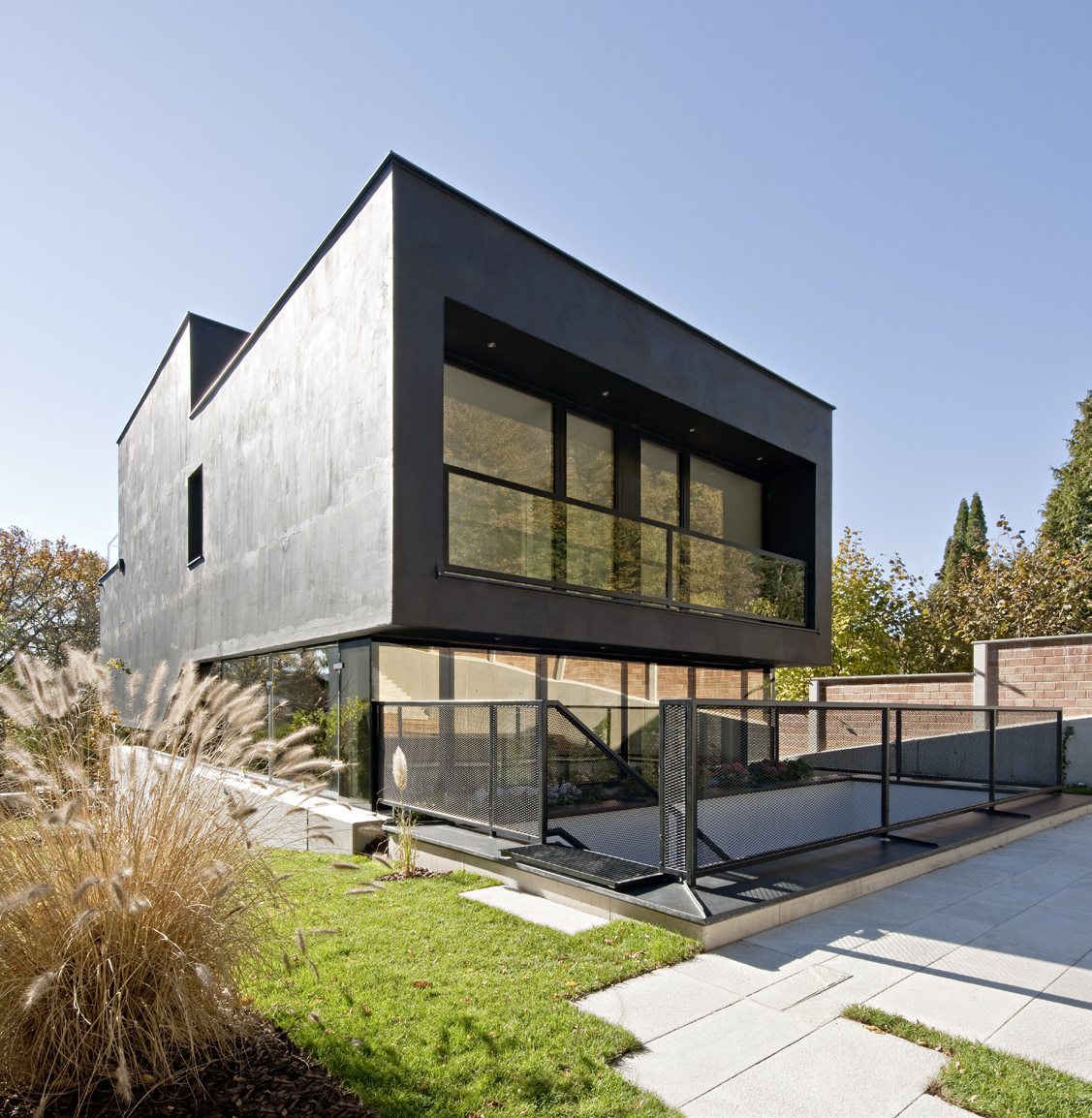 On the fringe of the Vienna Woods sits this compact single-family house LOU. Resting on a steeply sloping site, the designers wanted the first impression to be reinforced by the matte black skin of the building. Inside, the project offers a spacious and varied living environment on staggered half-story levels. As the team notes, at each level, the house opens differently to the outside world. The main residential levels are nestled against the slope, separated from the garden only by an all around-strip of windows which allows looking and stepping out in every direction.
On the fringe of the Vienna Woods sits this compact single-family house LOU. Resting on a steeply sloping site, the designers wanted the first impression to be reinforced by the matte black skin of the building. Inside, the project offers a spacious and varied living environment on staggered half-story levels. As the team notes, at each level, the house opens differently to the outside world. The main residential levels are nestled against the slope, separated from the garden only by an all around-strip of windows which allows looking and stepping out in every direction.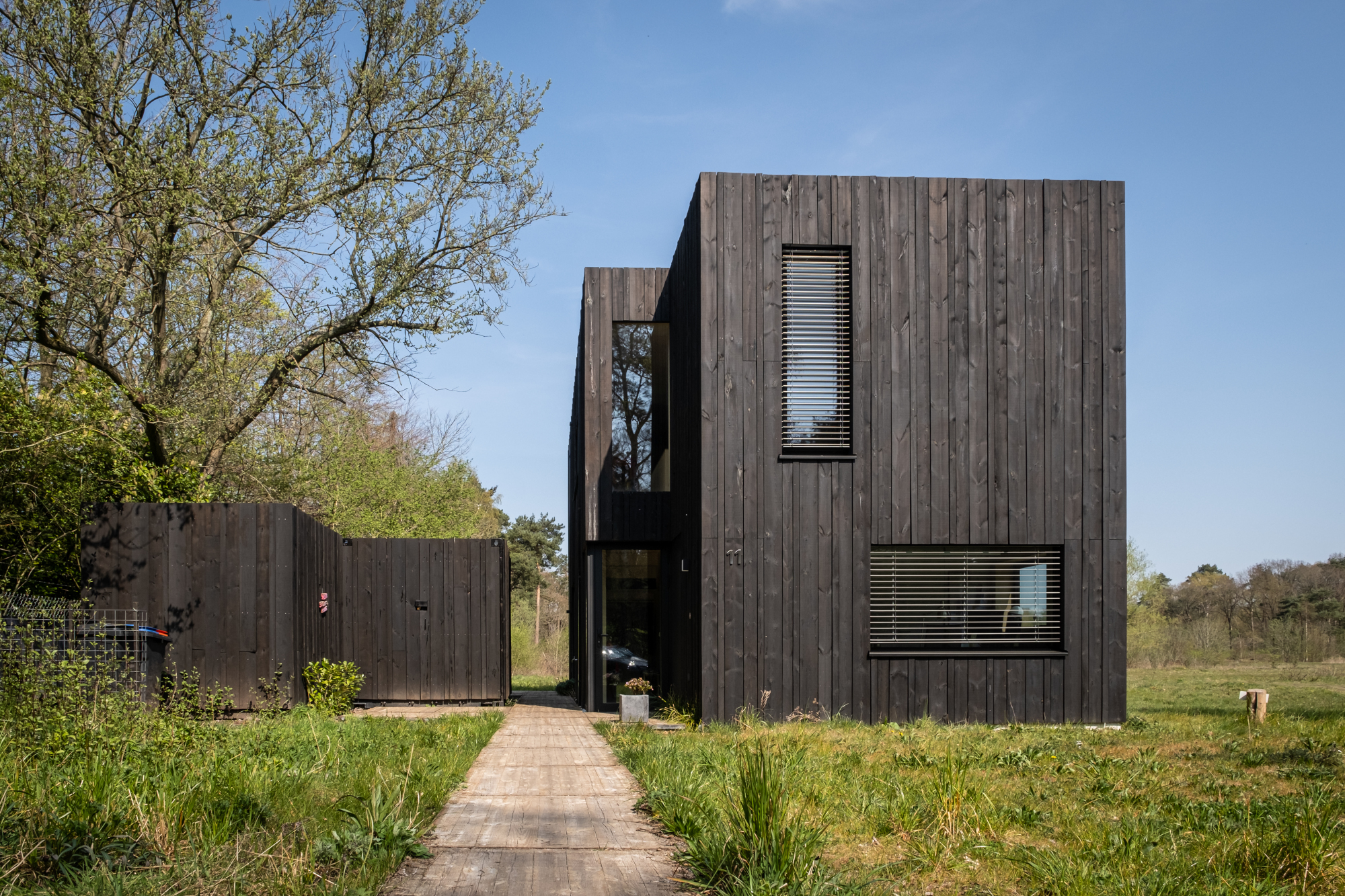
 This compact wooden house was designed by architect Joris Verhoeven for himself. Located within the Drijflanen nature reserve in Tilburg, the matte building is designed to be a part of nature. With its rough black façade, it was made to fit within the context of surrounding tree trunks. The cottage house is prefabricated and constructed out of wooden cassettes filled with flax insulation. In turn, the interior of the cassettes is made of birch plywood. Other parts of the interior, such as the interior door, kitchen and stair railing, are finished in matte black, just like the exterior window frames. In this way the inside and outside of the house were made to relate to one another.
This compact wooden house was designed by architect Joris Verhoeven for himself. Located within the Drijflanen nature reserve in Tilburg, the matte building is designed to be a part of nature. With its rough black façade, it was made to fit within the context of surrounding tree trunks. The cottage house is prefabricated and constructed out of wooden cassettes filled with flax insulation. In turn, the interior of the cassettes is made of birch plywood. Other parts of the interior, such as the interior door, kitchen and stair railing, are finished in matte black, just like the exterior window frames. In this way the inside and outside of the house were made to relate to one another.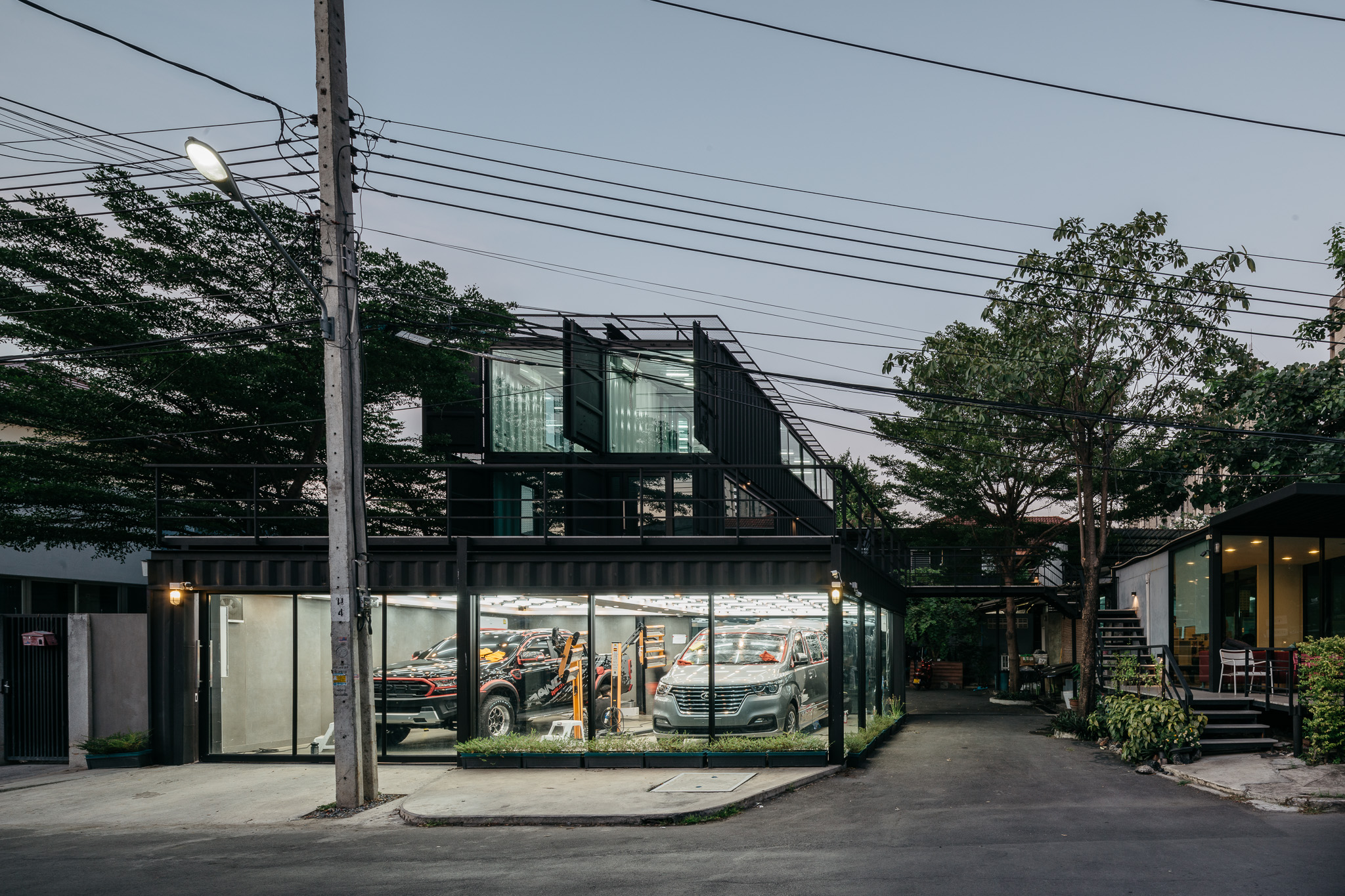
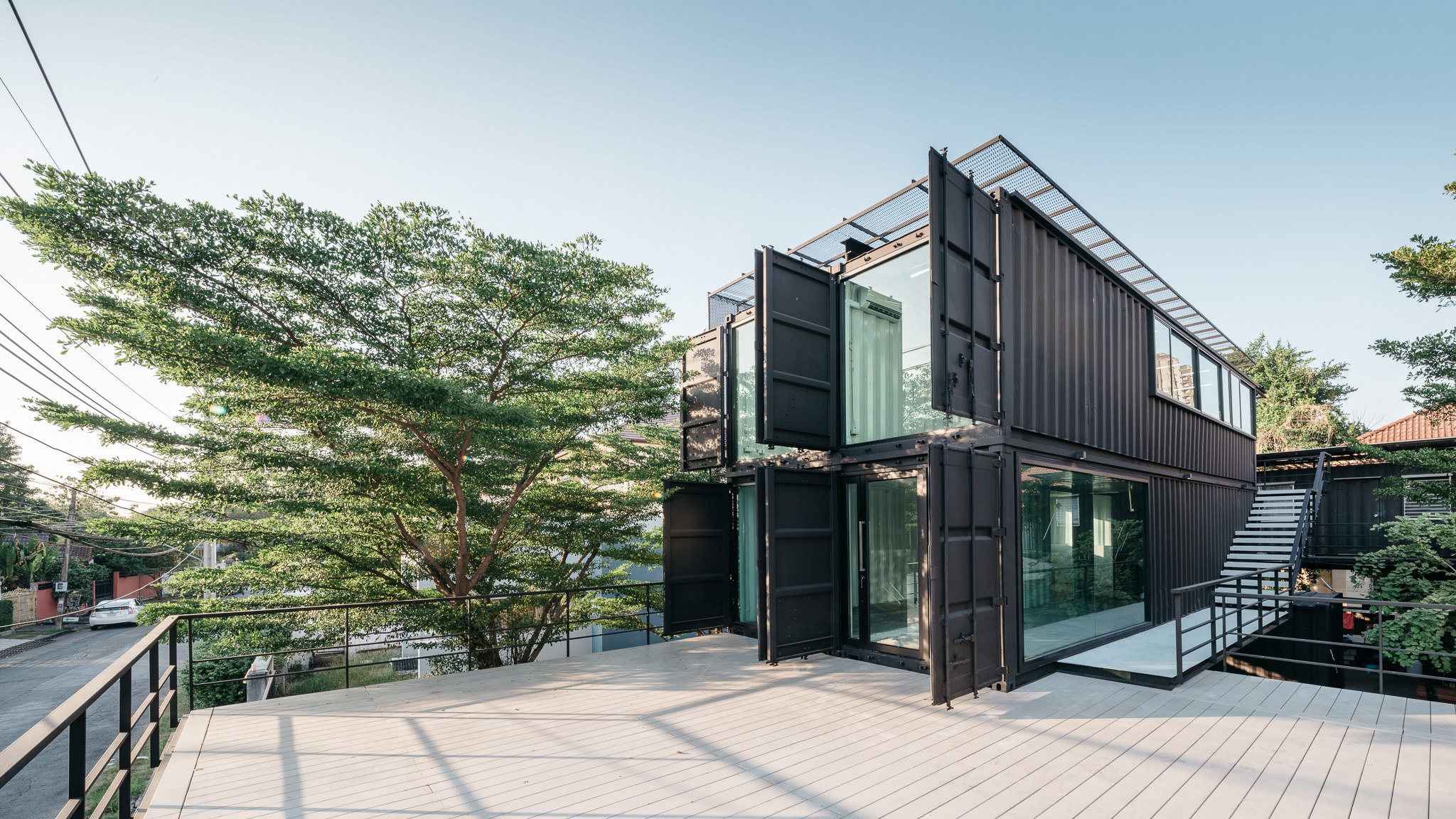 Located in Muang Thong Thani, this project is the expansion of a car care center. The building is located on a 3230-square feet (300-meter) plot of land, with a long and narrow plot that required an in-depth organization of the building. Since the space of the car care center was too limited, a new space was necessary for project extension. The building consists of four small containers and four large containers. The design team made the building exterior to be painted in matte black but the interior is white. The external envelope includes the west façade and the roof, which have metal sunshades to reflect sunlight and protect the building from the heat.
Located in Muang Thong Thani, this project is the expansion of a car care center. The building is located on a 3230-square feet (300-meter) plot of land, with a long and narrow plot that required an in-depth organization of the building. Since the space of the car care center was too limited, a new space was necessary for project extension. The building consists of four small containers and four large containers. The design team made the building exterior to be painted in matte black but the interior is white. The external envelope includes the west façade and the roof, which have metal sunshades to reflect sunlight and protect the building from the heat.
 The ‘Les Marais’ project started with the design team’s fascination for the built landscape of the empty space that characterizes North American rural areas. For this design, depending on the observer’s location in the neighboring forest, the scales of the buildings are relative. The team explains that the wetland nature of this lakeside property was preserved and then the collective landscape of the built complex was designed. A large ‘plate’ of black wood links the three structures to establish a common base, while large cutouts were made in each ‘shape’, also of black painted wood, to reveal the interior materiality of the red cedar buildings.
The ‘Les Marais’ project started with the design team’s fascination for the built landscape of the empty space that characterizes North American rural areas. For this design, depending on the observer’s location in the neighboring forest, the scales of the buildings are relative. The team explains that the wetland nature of this lakeside property was preserved and then the collective landscape of the built complex was designed. A large ‘plate’ of black wood links the three structures to establish a common base, while large cutouts were made in each ‘shape’, also of black painted wood, to reveal the interior materiality of the red cedar buildings.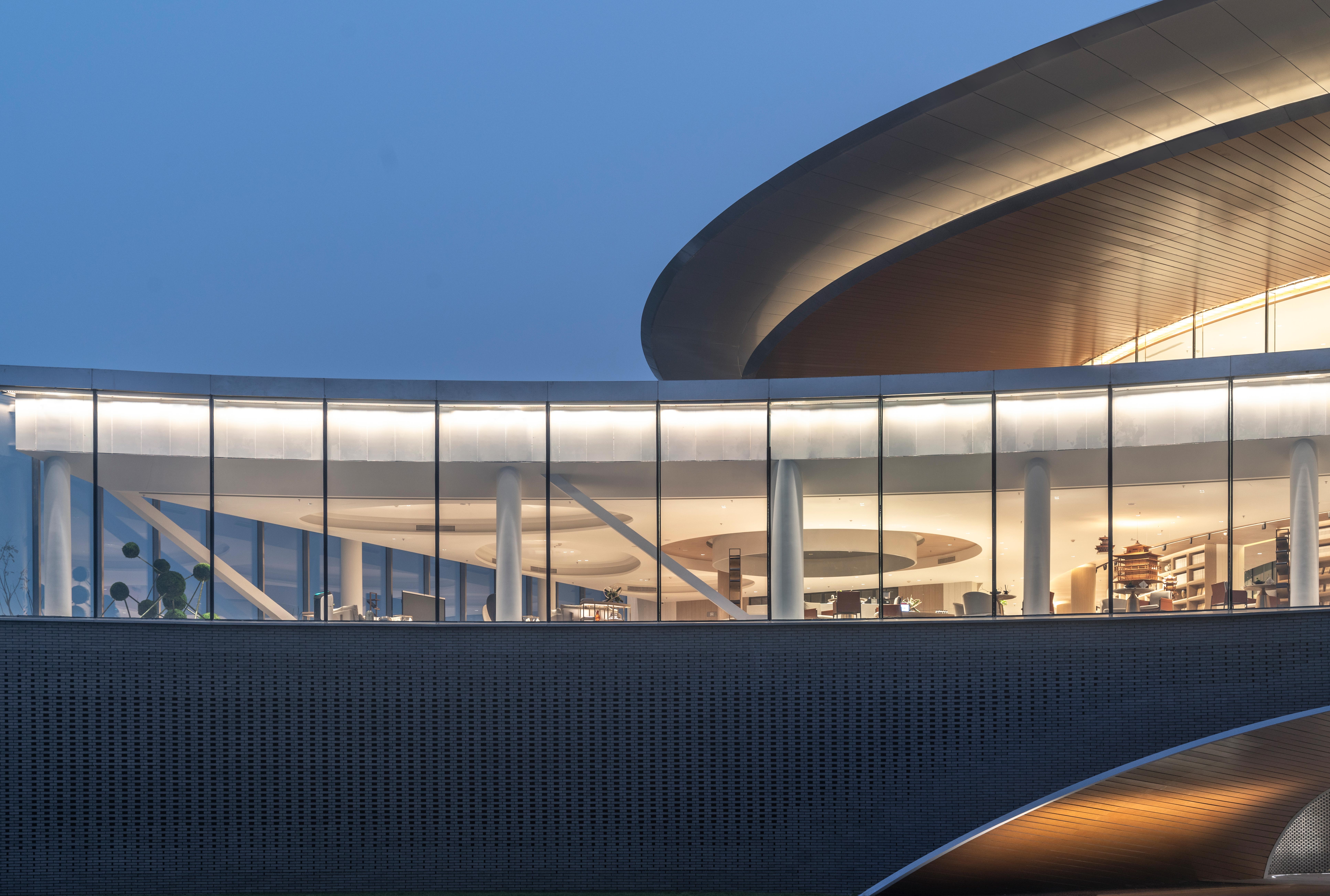
 Sited at the future land-air transport hub of Henan, this hotel was made as a “paradise city with national customs” in Zhengzhou. Ideas of Chinese ancient garden construction were introduced into the “south garden” that make the most important building the starting point of the entire array. Moreover, the matte building façade is presented in the shape of arc to match the main garden in the front. The team choose a range of matte-finish materials like frosted earthenware tile, matte composite aluminum-plastic sheet and brushed stainless steel. It is the first floor of the building that is composed of external matte façade built from 100,000 earthenware tiles.
Sited at the future land-air transport hub of Henan, this hotel was made as a “paradise city with national customs” in Zhengzhou. Ideas of Chinese ancient garden construction were introduced into the “south garden” that make the most important building the starting point of the entire array. Moreover, the matte building façade is presented in the shape of arc to match the main garden in the front. The team choose a range of matte-finish materials like frosted earthenware tile, matte composite aluminum-plastic sheet and brushed stainless steel. It is the first floor of the building that is composed of external matte façade built from 100,000 earthenware tiles.